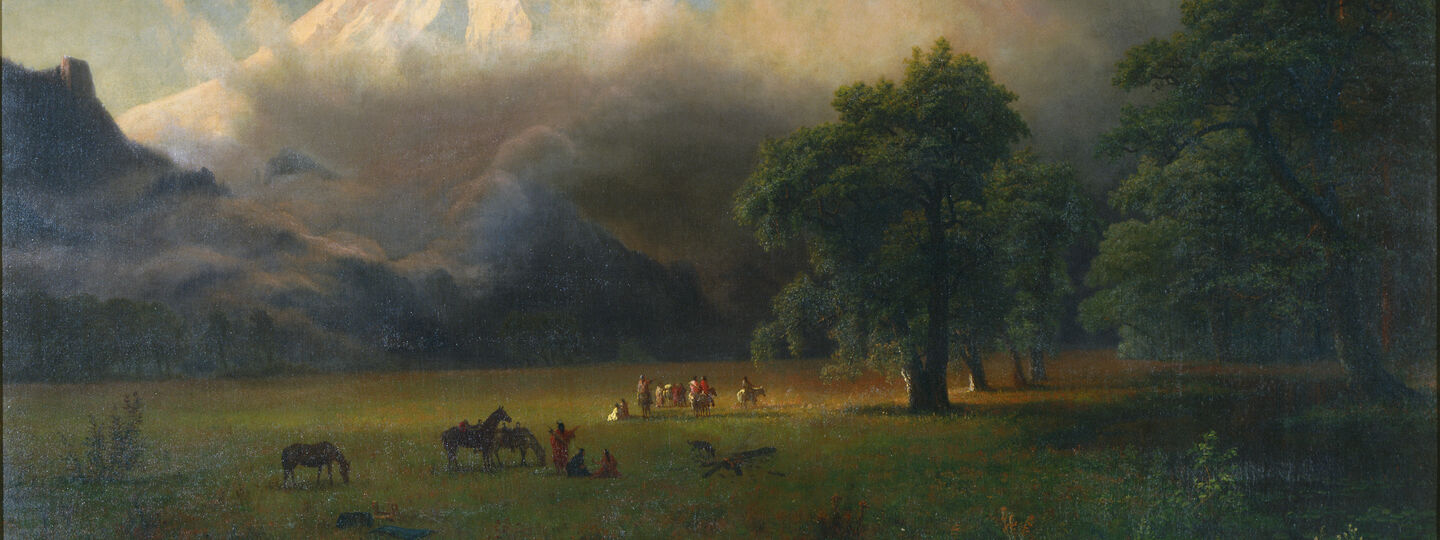
Info
Mount Adams, Washington
Albert Bierstadt
1875
Princeton University Art Museum
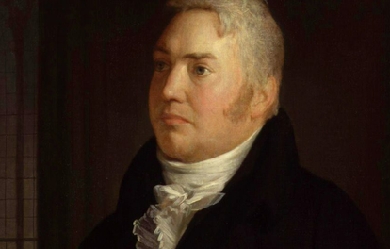
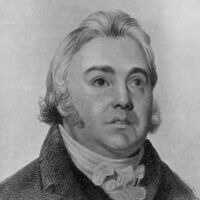
Samuel Taylor Coleridge (21 October 1772 – 25 July 1834) was an English poet, Romantic, literary critic and philosopher who, with his friend William Wordsworth, was a founder of the Romantic Movement in England and a member of the Lake Poets. He is probably best known for his poems The Rime of the Ancient Mariner and Kubla Khan, as well as for his major prose work Biographia Literaria. His critical work, especially on Shakespeare, was highly influential, and he helped introduce German idealist philosophy to English-speaking culture. He coined many familiar words and phrases, including the celebrated suspension of disbelief. He was a major influence, via Emerson, on American transcendentalism. Throughout his adult life, Coleridge suffered from crippling bouts of anxiety and depression; it has been speculated by some that he suffered from bipolar disorder, a condition as yet unidentified during his lifetime. Coleridge suffered from poor health that may have stemmed from a bout of rheumatic fever and other childhood illnesses. He was treated for these concerns with laudanum, which fostered a lifelong opium addiction. Early life Coleridge was born on 21 October 1772 in the country town of Ottery St Mary, Devon, England. Samuel's father, the Reverend John Coleridge (1718–1781), was a well-respected vicar of the parish and headmaster of Henry VIII's Free Grammar School at Ottery. He had three children by his first wife. Samuel was the youngest of ten by Reverend Coleridge's second wife, Anne Bowden (1726–1809). Coleridge suggests that he "took no pleasure in boyish sports" but instead read "incessantly" and played by himself. After John Coleridge died in 1781, 8-year-old Samuel was sent to Christ's Hospital, a charity school founded in the 16th century in Greyfriars, London, where he remained throughout his childhood, studying and writing poetry. At that school Coleridge became friends with Charles Lamb, a schoolmate, and studied the works of Virgil and William Lisle Bowles. In one of a series of autobiographical letters written to Thomas Poole, Coleridge wrote: "At six years old I remember to have read Belisarius, Robinson Crusoe, and Philip Quarll – and then I found the Arabian Nights' Entertainments – one tale of which (the tale of a man who was compelled to seek for a pure virgin) made so deep an impression on me (I had read it in the evening while my mother was mending stockings) that I was haunted by spectres whenever I was in the dark – and I distinctly remember the anxious and fearful eagerness with which I used to watch the window in which the books lay – and whenever the sun lay upon them, I would seize it, carry it by the wall, and bask, and read.” However, Coleridge seems to have appreciated his teacher, as he wrote in recollections of his schooldays in Biographia Literaria: I enjoyed the inestimable advantage of a very sensible, though at the same time, a very severe master [...] At the same time that we were studying the Greek Tragic Poets, he made us read Shakespeare and Milton as lessons: and they were the lessons too, which required most time and trouble to bring up, so as to escape his censure. I learnt from him, that Poetry, even that of the loftiest, and, seemingly, that of the wildest odes, had a logic of its own, as severe as that of science; and more difficult, because more subtle, more complex, and dependent on more, and more fugitive causes. [...] In our own English compositions (at least for the last three years of our school education) he showed no mercy to phrase, metaphor, or image, unsupported by a sound sense, or where the same sense might have been conveyed with equal force and dignity in plainer words... In fancy I can almost hear him now, exclaiming Harp? Harp? Lyre? Pen and ink, boy, you mean! Muse, boy, Muse? your Nurse's daughter, you mean! Pierian spring? Oh aye! the cloister-pump, I suppose! [...] Be this as it may, there was one custom of our master's, which I cannot pass over in silence, because I think it ... worthy of imitation. He would often permit our theme exercises, ... to accumulate, till each lad had four or five to be looked over. Then placing the whole number abreast on his desk, he would ask the writer, why this or that sentence might not have found as appropriate a place under this or that other thesis: and if no satisfying answer could be returned, and two faults of the same kind were found in one exercise, the irrevocable verdict followed, the exercise was torn up, and another on the same subject to be produced, in addition to the tasks of the day. Throughout his life, Coleridge idealized his father as pious and innocent, while his relationship with his mother was more problematic. His childhood was characterized by attention seeking, which has been linked to his dependent personality as an adult. He was rarely allowed to return home during the school term, and this distance from his family at such a turbulent time proved emotionally damaging. He later wrote of his loneliness at school in the poem Frost at Midnight: "With unclosed lids, already had I dreamt/Of my sweet birthplace." From 1791 until 1794, Coleridge attended Jesus College, Cambridge. In 1792, he won the Browne Gold Medal for an ode that he wrote on the slave trade. In December 1793, he left the college and enlisted in the Royal Dragoons using the false name "Silas Tomkyn Comberbache", perhaps because of debt or because the girl that he loved, Mary Evans, had rejected him. Afterwards, he was rumoured to have had a bout of severe depression. His brothers arranged for his discharge a few months later under the reason of "insanity" and he was readmitted to Jesus College, though he would never receive a degree from Cambridge. Pantisocracy and marriage At the university, he was introduced to political and theological ideas then considered radical, including those of the poet Robert Southey. Coleridge joined Southey in a plan, soon abandoned, to found a utopian commune-like society, called Pantisocracy, in the wilderness of Pennsylvania. In 1795, the two friends married sisters Sarah and Edith Fricker, in St Mary Redcliffe, Bristol, but Coleridge's marriage proved unhappy. He grew to detest his wife, whom he only married because of social constraints. He eventually separated from her. Coleridge made plans to establish a journal, The Watchman, to be printed every eight days in order to avoid a weekly newspaper tax. The first issue of the short-lived journal was published in March 1796; it had ceased publication by May of that year. The years 1797 and 1798, during which he lived in what is now known as Coleridge Cottage, in Nether Stowey, Somerset, were among the most fruitful of Coleridge's life. In 1795, Coleridge met poet William Wordsworth and his sister Dorothy. (Wordsworth, having visited him and being enchanted by the surroundings, rented Alfoxton Park, a little over three miles [5 km] away.) Besides the Rime of The Ancient Mariner, he composed the symbolic poem Kubla Khan, written—Coleridge himself claimed—as a result of an opium dream, in "a kind of a reverie"; and the first part of the narrative poem Christabel. The writing of Kubla Khan, written about the Mongol emperor Kublai Khan and his legendary palace at Xanadu, was said to have been interrupted by the arrival of a "Person from Porlock" — an event that has been embellished upon in such varied contexts as science fiction and Nabokov's Lolita. During this period, he also produced his much-praised "conversation" poems This Lime-Tree Bower My Prison, Frost at Midnight, and The Nightingale. In 1798, Coleridge and Wordsworth published a joint volume of poetry, Lyrical Ballads, which proved to be the starting point for the English romantic movement. Wordsworth may have contributed more poems, but the real star of the collection was Coleridge's first version of The Rime of the Ancient Mariner. It was the longest work and drew more praise and attention than anything else in the volume. In the spring Coleridge temporarily took over for Rev. Joshua Toulmin at Taunton's Mary Street Unitarian Chapel while Rev. Toulmin grieved over the drowning death of his daughter Jane. Poetically commenting on Toulmin's strength, Coleridge wrote in a 1798 letter to John Prior Estlin, "I walked into Taunton (eleven miles) and back again, and performed the divine services for Dr. Toulmin. I suppose you must have heard that his daughter, (Jane, on 15 April 1798) in a melancholy derangement, suffered herself to be swallowed up by the tide on the sea-coast between Sidmouth and Bere [sic] (Beer). These events cut cruelly into the hearts of old men: but the good Dr. Toulmin bears it like the true practical Christian, – there is indeed a tear in his eye, but that eye is lifted up to the Heavenly Father." In the autumn of 1798, Coleridge and Wordsworth left for a stay in Germany; Coleridge soon went his own way and spent much of his time in university towns. During this period, he became interested in German philosophy, especially the transcendental idealism and critical philosophy of Immanuel Kant, and in the literary criticism of the 18th century dramatist Gotthold Lessing. Coleridge studied German and, after his return to England, translated the dramatic trilogy Wallenstein by the German Classical poet Friedrich Schiller into English. He continued to pioneer these ideas through his own critical writings for the rest of his life (sometimes without attribution), although they were unfamiliar and difficult for a culture dominated by empiricism. In 1799, Coleridge and Wordsworth stayed at Thomas Hutchinson's farm on the Tees at Sockburn, near Darlington. It was at Sockburn that Coleridge wrote his ballad-poem Love, addressed to Sara. The knight mentioned is the mailed figure on the Conyers tomb in ruined Sockburn church. The figure has a wyvern at his feet, a reference to the Sockburn worm slain by Sir John Conyers (and a possible source for Lewis Carroll's Jabberwocky). The worm was supposedly buried under the rock in the nearby pasture; this was the 'greystone' of Coleridge's first draft, later transformed into a 'mount'. The poem was a direct inspiration for John Keats' famous poem La Belle Dame Sans Merci. Coleridge's early intellectual debts, besides German idealists like Kant and critics like Lessing, were first to William Godwin's Political Justice, especially during his Pantisocratic period, and to David Hartley's Observations on Man, which is the source of the psychology which is found in Frost at Midnight. Hartley argued that one becomes aware of sensory events as impressions, and that "ideas" are derived by noticing similarities and differences between impressions and then by naming them. Connections resulting from the coincidence of impressions create linkages, so that the occurrence of one impression triggers those links and calls up the memory of those ideas with which it is associated (See Dorothy Emmet, "Coleridge and Philosophy"). Coleridge was critical of the literary taste of his contemporaries, and a literary conservative insofar as he was afraid that the lack of taste in the ever growing masses of literate people would mean a continued desecration of literature itself. In 1800, he returned to England and shortly thereafter settled with his family and friends at Keswick in the Lake District of Cumberland to be near Grasmere, where Wordsworth had moved. Soon, however, he was beset by marital problems, illnesses, increased opium dependency, tensions with Wordsworth, and a lack of confidence in his poetic powers, all of which fuelled the composition of Dejection: An Ode and an intensification of his philosophical studies. Later life and increasing drug use In 1804, he travelled to Sicily and Malta, working for a time as Acting Public Secretary of Malta under the Commissioner, Alexander Ball, a task he performed quite successfully. However, he gave this up and returned to England in 1806. Dorothy Wordsworth was shocked at his condition upon his return. From 1807 to 1808, Coleridge returned to Malta and then travelled in Sicily and Italy, in the hope that leaving Britain's damp climate would improve his health and thus enable him to reduce his consumption of opium. Thomas de Quincey alleges in his Recollections of the Lakes and the Lake Poets that it was during this period that Coleridge became a full-blown opium addict, using the drug as a substitute for the lost vigour and creativity of his youth. It has been suggested, however, that this reflects de Quincey's own experiences more than Coleridge's. His opium addiction (he was using as much as two quarts of laudanum a week) now began to take over his life: he separated from his wife Sarah in 1808, quarrelled with Wordsworth in 1810, lost part of his annuity in 1811, and put himself under the care of Dr. Daniel in 1814. In 1809, Coleridge made his second attempt to become a newspaper publisher with the publication of the journal entitled The Friend. It was a weekly publication that, in Coleridge’s typically ambitious style, was written, edited, and published almost entirely single-handedly. Given that Coleridge tended to be highly disorganized and had no head for business, the publication was probably doomed from the start. Coleridge financed the journal by selling over five hundred subscriptions, over two dozen of which were sold to members of Parliament, but in late 1809, publication was crippled by a financial crisis and Coleridge was obliged to approach "Conversation Sharp", Tom Poole and one or two other wealthy friends for an emergency loan in order to continue. The Friend was an eclectic publication that drew upon every corner of Coleridge’s remarkably diverse knowledge of law, philosophy, morals, politics, history, and literary criticism. Although it was often turgid, rambling, and inaccessible to most readers, it ran for 25 issues and was republished in book form a number of times. Years after its initial publication, The Friend became a highly influential work and its effect was felt on writers and philosophers from J.S. Mill to Emerson. Between 1810 and 1820, this "giant among dwarfs", as he was often considered by his contemporaries, gave a series of lectures in London and Bristol – those on Shakespeare renewed interest in the playwright as a model for contemporary writers. Much of Coleridge's reputation as a literary critic is founded on the lectures that he undertook in the winter of 1810–11 which were sponsored by the Philosophical Institution and given at Scot's Corporation Hall off Fetter Lane, Fleet Street. These lectures were heralded in the prospectus as "A Course of Lectures on Shakespeare and Milton, in Illustration of the Principles of Poetry." Coleridge's ill-health, opium-addiction problems, and somewhat unstable personality meant that all his lectures were plagued with problems of delays and a general irregularity of quality from one lecture to the next. Furthermore, Coleridge's mind was extremely dynamic and his personality was spasmodic. As a result of these factors, Coleridge often failed to prepare anything but the loosest set of notes for his lectures and regularly entered into extremely long digressions which his audiences found difficult to follow. However, it was the lecture on Hamlet given on 2 January 1812 that was considered the best and has influenced Hamlet studies ever since. Before Coleridge, Hamlet was often denigrated and belittled by critics from Voltaire to Dr. Johnson. Coleridge rescued Hamlet and his thoughts on the play are often still published as supplements to the text. In August 1814, Coleridge was approached by Lord Byron's publisher, John Murray, about the possibility of translating Goethe's classic Faust (1808). Coleridge was regarded by many as the greatest living writer on the demonic and he accepted the commission, only to abandon work on it after six weeks. Until recently, scholars have accepted that Coleridge never returned to the project, despite Goethe's own belief in the 1820s that Coleridge had in fact completed a long translation of the work. In September 2007, Oxford University Press sparked a heated scholarly controversy by publishing an English translation of Goethe's work which purported to be Coleridge's long-lost masterpiece (the text in question first appeared anonymously in 1821). In 1817, Coleridge, with his addiction worsening, his spirits depressed, and his family alienated, took residence in the Highgate homes, then just north of London, of the physician James Gillman, first at South Grove and later at the nearby 3 The Grove. Gillman was partially successful in controlling the poet's addiction. Colerdige remained in Highgate for the rest of his life, and the house became a place of literary pilgrimage of writers including Carlyle and Emerson. In Gillman's home, he finished his major prose work, the Biographia Literaria (1817), a volume composed of 23 chapters of autobiographical notes and dissertations on various subjects, including some incisive literary theory and criticism. He composed much poetry here and had many inspirations — a few of them from opium overdose. Perhaps because he conceived such grand projects, he had difficulty carrying them through to completion, and he berated himself for his "indolence". It is unclear whether his growing use of opium (and the brandy in which it was dissolved) was a symptom or a cause of his growing depression. He published other writings while he was living at the Gillman home, notably Sibylline Leaves (1817), Aids to Reflection (1825), and Church and State (1826). He died in Highgate, London on 25 July 1834 as a result of heart failure compounded by an unknown lung disorder, possibly linked to his use of opium. Coleridge had spent 18 years under the roof of the Gillman family, who built an addition onto their home to accommodate the poet. Carlyle described him at Highgate: "Coleridge sat on the brow of Highgate Hill, in those years, looking down on London and its smoke-tumult, like a sage escaped from the inanity of life`s battle ... The practical intellects of the world did not much heed him, or carelessly reckoned him a metaphysical dreamer: but to the rising spirits of the young generation he had this dusky sublime character; and sat there as a kind of Magus, girt in mystery and enigma; his Dodona oak-grove (Mr. Gilman`s house at Highgate) whispering strange things, uncertain whether oracles or jargon." Poetry Despite not enjoying the name recognition or popular acclaim that Wordsworth or Shelley have had, Coleridge is one of the most important figures in English poetry. His poems directly and deeply influenced all the major poets of the age. He was known by his contemporaries as a meticulous craftsman who was more rigorous in his careful reworking of his poems than any other poet, and Southey and Wordsworth were dependent on his professional advice. His influence on Wordsworth is particularly important because many critics have credited Coleridge with the very idea of "Conversational Poetry". The idea of utilizing common, everyday language to express profound poetic images and ideas for which Wordsworth became so famous may have originated almost entirely in Coleridge’s mind. It is difficult to imagine Wordsworth’s great poems, The Excursion or The Prelude, ever having been written without the direct influence of Coleridge’s originality. As important as Coleridge was to poetry as a poet, he was equally important to poetry as a critic. Coleridge's philosophy of poetry, which he developed over many years, has been deeply influential in the field of literary criticism. This influence can be seen in such critics as A.O. Lovejoy and I.A. Richards. The Rime of the Ancient Mariner, Christabel, and Kubla Khan Coleridge is probably best known for his long poems, The Rime of the Ancient Mariner and Christabel. Even those who have never read the Rime have come under its influence: its words have given the English language the metaphor of an albatross around one's neck, the quotation of "water, water everywhere, nor any drop to drink" (almost always rendered as "but not a drop to drink"), and the phrase "a sadder and a wiser man" (again, usually rendered as "sadder but wiser man"). The phrase "All creatures great and small" may have been inspired by The Rime: "He prayeth best, who loveth best;/ All things great and small;/ For the dear God who loveth us;/ He made and loveth all."Christabel is known for its musical rhythm, language, and its Gothic tale. Kubla Khan, or, A Vision in a Dream, A Fragment, although shorter, is also widely known. Both Kubla Khan and Christabel have an additional "Romantic" aura because they were never finished. Stopford Brooke characterised both poems as having no rival due to their "exquisite metrical movement" and "imaginative phrasing.” The Conversation poems * The Eolian Harp (1795) * Reflections on having left a Place of Retirement (1795) * This Lime-Tree Bower my Prison (1797) * Frost at Midnight (1798) * Fears in Solitude (1798) * The Nightingale: A Conversation Poem (1798) * Dejection: An Ode (1802) * To William Wordsworth (1807) The eight of Coleridge's poems listed above are now often discussed as a group entitled "Conversation poems". The term itself was coined in 1928 by George McLean Harper, who borrowed the subtitle of The Nightingale: A Conversation Poem (1798) to describe the seven other poems as well. The poems are considered by many critics to be among Coleridge's finest verses; thus Harold Bloom has written, "With Dejection, The Ancient Mariner, and Kubla Khan, Frost at Midnight shows Coleridge at his most impressive." They are also among his most influential poems, as discussed further below. Harper himself considered that the eight poems represented a form of blank verse that is "...more fluent and easy than Milton's, or any that had been written since Milton". In 2006 Robert Koelzer wrote about another aspect of this apparent "easiness", noting that Conversation poems such as "... Coleridge's The Eolian Harp and The Nightingale maintain a middle register of speech, employing an idiomatic language that is capable of being construed as un-symbolic and un-musical: language that lets itself be taken as 'merely talk' rather than rapturous 'song'." The last ten lines of "Frost at Midnight" were chosen by Harper as the "best example of the peculiar kind of blank verse Coleridge had evolved, as natural-seeming as prose, but as exquisitely artistic as the most complicated sonnet." The speaker of the poem is addressing his infant son, asleep by his side: Therefore all seasons shall be sweet to thee, Whether the summer clothe the general earth With greenness, or the redbreast sit and sing Betwixt the tufts of snow on the bare branch Of mossy apple-tree, while the nigh thatch Smokes in the sun-thaw; whether the eave-drops fall Heard only in the trances of the blast, Or if the secret ministry of frost Shall hang them up in silent icicles, Quietly shining to the quiet Moon. In 1965, M. H. Abrams wrote a broad description that applies to the Conversation poems: "The speaker begins with a description of the landscape; an aspect or change of aspect in the landscape evokes a varied by integral process of memory, thought, anticipation, and feeling which remains closely intervolved with the outer scene. In the course of this meditation the lyric speaker achieves an insight, faces up to a tragic loss, comes to a moral decision, or resolves an emotional problem. Often the poem rounds itself to end where it began, at the outer scene, but with an altered mood and deepened understanding which is the result of the intervening meditation." In fact, Abrams was describing both the Conversation poems and later poems influenced by them. Abrams' essay has been called a "touchstone of literary criticism". As Paul Magnuson described it in 2002, "Abrams credited Coleridge with originating what Abrams called the 'greater Romantic lyric', a genre that began with Coleridge's 'Conversation' poems, and included Wordsworth's Tintern Abbey, Shelley's Stanzas Written in Dejection and Keats's Ode to a Nightingale, and was a major influence on more modern lyrics by Matthew Arnold, Walt Whitman, Wallace Stevens, and W. H. Auden.” Literary criticism In addition to his poetry, Coleridge also wrote influential pieces of literary criticism including Biographia Literaria, a collection of his thoughts and opinions on literature which he published in 1817. The work delivered both biographical explanations of the author's life as well as his impressions on literature. The collection also contained an analysis of a broad range of philosophical principles of literature ranging from Aristotle to Immanuel Kant and Schelling and applied them to the poetry of peers such as William Wordsworth. Coleridge's explanation of metaphysical principles were popular topics of discourse in academic communities throughout the 19th and 20th centuries, and T.S. Eliot stated that he believed that Coleridge was "perhaps the greatest of English critics, and in a sense the last." Eliot suggests that Coleridge displayed "natural abilities" far greater than his contemporaries, dissecting literature and applying philosophical principles of metaphysics in a way that brought the subject of his criticisms away from the text and into a world of logical analysis that mixed logical analysis and emotion. However, Eliot also criticizes Coleridge for allowing his emotion to play a role in the metaphysical process, believing that critics should not have emotions that are not provoked by the work being studied. Hugh Kenner in Historical Fictions, discusses Norman Furman's Coleridge, the Damaged Archangel and suggests that the term "criticism" is too often applied to Biographia Literaria, which both he and Furman describe as having failed to explain or help the reader understand works of art. To Kenner, Coleridge's attempt to discuss complex philosophical concepts without describing the rational process behind them displays a lack of critical thinking that makes the volume more of a biography than a work of criticism. In Biographia Literaria and his poetry, symbols are not merely "objective correlatives" to Coleridge, but instruments for making the universe and personal experience intelligible and spiritually covalent. To Coleridge, the "cinque spotted spider," making its way upstream "by fits and starts," [Biographia Literaria] is not merely a comment on the intermittent nature of creativity, imagination, or spiritual progress, but the journey and destination of his life. The spider's five legs represent the central problem that Coleridge lived to resolve, the conflict between Aristotelian logic and Christian philosophy. Two legs of the spider represent the "me-not me" of thesis and antithesis, the idea that a thing cannot be itself and its opposite simultaneously, the basis of the clockwork Newtonian world view that Coleridge rejected. The remaining three legs—exothesis, mesothesis and synthesis or the Holy trinity—represent the idea that things can diverge without being contradictory. Taken together, the five legs—with synthesis in the center, form the Holy Cross of Ramist logic. The cinque-spotted spider is Coleridge's emblem of holism, the quest and substance of Coleridge's thought and spiritual life. Coleridge and the influence of the Gothic Coleridge wrote reviews of Ann Radcliffe’s books and The Mad Monk, among others. He comments in his reviews: "Situations of torment, and images of naked horror, are easily conceived; and a writer in whose works they abound, deserves our gratitude almost equally with him who should drag us by way of sport through a military hospital, or force us to sit at the dissecting-table of a natural philosopher. To trace the nice boundaries, beyond which terror and sympathy are deserted by the pleasurable emotions, – to reach those limits, yet never to pass them, hic labor, hic opus est." and "The horrible and the preternatural have usually seized on the popular taste, at the rise and decline of literature. Most powerful stimulants, they can never be required except by the torpor of an unawakened, or the languor of an exhausted, appetite... We trust, however, that satiety will banish what good sense should have prevented; and that, wearied with fiends, incomprehensible characters, with shrieks, murders, and subterraneous dungeons, the public will learn, by the multitude of the manufacturers, with how little expense of thought or imagination this species of composition is manufactured." However, Coleridge used these elements in poems such as The Rime of the Ancient Mariner (1798), Christabel and Kubla Khan (published in 1816, but known in manuscript form before then) and certainly influenced other poets and writers of the time. Poems like these both drew inspiration from and helped to inflame the craze for Gothic romance. Mary Shelley, who knew Coleridge well, mentions The Rime of the Ancient Mariner twice directly in Frankenstein, and some of the descriptions in the novel echo it indirectly. Although William Godwin, her father, disagreed with Coleridge on some important issues, he respected his opinions and Coleridge often visited the Godwins. Mary Shelley later recalled hiding behind the sofa and hearing his voice chanting The Rime of the Ancient Mariner. References Wikipedia - http://en.wikipedia.org/wiki/Samuel_Taylor_Coleridge
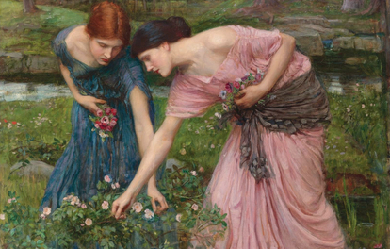
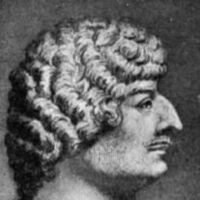
Robert Herrick (baptized 24 August 1591 – buried 15 October 1674) was a 17th-century English poet. Born in Cheapside, London, he was the seventh child and fourth son of Julia Stone and Nicholas Herrick, a prosperous goldsmith. His father died in a fall from a fourth-floor window in November 1592, when Robert was a year old (whether this was suicide remains unclear). The tradition that Herrick received his education at Westminster is groundless. It is more likely that (like his uncle's children) he attended The Merchant Taylors' School. In 1607 he became apprenticed to his uncle, Sir William Herrick, who was a goldsmith and jeweler to the king. The apprenticeship ended after only six years when Herrick, at age twenty-two, matriculated at St John's College, Cambridge. He graduated in 1617. Robert Herrick became a member of the Sons of Ben, a group centered upon an admiration for the works of Ben Jonson. Herrick wrote at least five poems to Jonson. Herrick took holy orders in 1623, and in 1629 he became vicar of Dean Prior in Devonshire. In 1647, in the wake of the English Civil War, Herrick was ejected from his vicarage for refusing the Solemn League and Covenant. He then returned to London, living in Westminster and depending on the charity of his friends and family. He spent some time preparing his lyric poems for publication, and had them printed in 1648 under the title Hesperides; or the Works both Human and Divine of Robert Herrick, with a dedication to the Prince of Wales. When King Charles II was restored to the throne in 1660, Herrick petitioned for his own restoration to his living. Perhaps King Charles felt kindly towards this genial man, who had written verses celebrating the births of both Charles II and his brother James before the Civil War. Herrick became the vicar of Dean Prior again in the summer of 1662 and lived there until his death in October 1674, at the ripe age of 83. His date of death is not known, but he was buried on 15 October. Herrick was a bachelor all his life, and many of the women he names in his poems are thought to be fictional. Poetic style and stature Herrick wrote over 2,500 poems, about half of which appear in his major work, Hesperides. Hesperides also includes the much shorter Noble Numbers, his first book, of spiritual works, first published in 1647. He is well-known for his style and, in his earlier works, frequent references to lovemaking and the female body. His later poetry was more of a spiritual and philosophical nature. Among his most famous short poetical sayings are the unique monometers, such as "Thus I / Pass by / And die,/ As one / Unknown / And gone." Herrick sets out his subject-matter in the poem he printed at the beginning of his collection, The Argument of his Book. He dealt with English country life and its seasons, village customs, complimentary poems to various ladies and his friends, themes taken from classical writings and a solid bedrock of Christian faith, not intellectualized but underpinning the rest. Herrick never married, and none of his love-poems seem to connect directly with any one beloved woman. He loved the richness of sensuality and the variety of life, and this is shown vividly in such poems as Cherry-ripe, Delight in Disorder and Upon Julia’s Clothes. The over-riding message of Herrick’s work is that life is short, the world is beautiful, love is splendid, and we must use the short time we have to make the most of it. This message can be seen clearly in To the Virgins, to make much of Time, To Daffodils, To Blossoms and Corinna going a-Maying, where the warmth and exuberance of what seems to have been a kindly and jovial personality comes over strongly. The opening stanza in one of his more famous poems, "To the Virgins, to Make Much of Time", is as follows: Gather ye rosebuds while ye may, Old Time is still a-flying; And this same flower that smiles today, Tomorrow will be dying. This poem is an example of the carpe diem genre; the popularity of Herrick's poems of this kind helped revive the genre. His poems were not widely popular at the time they were published. His style was strongly influenced by Ben Jonson, by the classical Roman writers, and by the poems of the late Elizabethan era. This must have seemed quite old-fashioned to an audience whose tastes were tuned to the complexities of the metaphysical poets such as John Donne and Andrew Marvell. His works were rediscovered in the early nineteenth century, and have been regularly printed ever since. The Victorian poet Swinburne described Herrick as the greatest song writer...ever born of English race. It is certainly true that despite his use of classical allusions and names, his poems are easier for modern readers to understand than those of many of his contemporaries. Robert Herrick is a major character in Rose Macaulay's 1932 historical novel, They Were Defeated. References Wikipedia - http://en.wikipedia.org/wiki/Robert_Herrick_(poet)
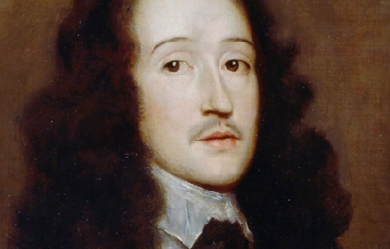
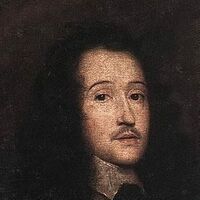
Richard Lovelace (1618–1657) was an English poet in the seventeenth century. He was a cavalier poet who fought on behalf of the king during the Civil war. His best known works are To Althea, from Prison, and To Lucasta, Going to the Warres. Early life and family Richard Lovelace was born in 1618. His exact birthplace is unknown, but it is documented that it was either Woolwich, Kent, or Holland. He was the oldest son of Sir William Lovelace and Anne Barne Lovelace and had four brothers and three sisters. His father was from an old distinguished military and legal family and the Lovelace family owned a considerable amount of property in Kent. His father, Sir William Lovelace, knt., was a member of the Virginia Company and an incorporator in the second Virginia Company in 1609. He was a soldier and he died during the war with Spain and Holland in the siege of Grol, a few days before the town fell. Richard was only 9 years old when his father died. Richard's father was the son of Sir William Lovelace and Elizabeth Aucher who was the daughter of Mabel Wroths and Edward Aucher, Esq. who inherited, under his father's Will, the manors of Bishopsbourne and Hautsborne. Elizabeth's nephew was Sir Anthony Aucher (1614 – 31 May 1692) an English politician and Cavalier during the English Civil War. He was the son of her brother Sir Anthony Aucher and his wife Hester Collett. Richard Lovelace's mother, Anne Barne (1587–1633), was the daughter of Sir William Barne and the granddaughter of Sir George Barne III (1532- d. 1593), the Lord Mayor of London and a prominent merchant and public official from London during the reign of Elizabeth I; and Anne Gerrard, daughter of Sir William Garrard, who was Lord Mayor of London in 1555. Richard Lovelace's mother was also the daughter of Anne Sandys and the granddaughter of Cicely Wilford and the Most Reverend Dr. Edwin Sandys, an Anglican church leader who successively held the posts of the Bishop of Worcester (1559–1570), Bishop of London (1570–1576), and the Archbishop of York (1576–1588). He was one of the translators of the Bishops' Bible. Anne Barne Lovelace married as her second husband, on 20 January 1630, at Greenwich, England, the Very Rev. Dr. Jonathan Browne They were the parents of one child, Anne Browne, who married Herbert Crofte, S.T.P. and D.D and were the parents of Sir Herbert Croft, 1st Baronet. His brother, Francis Lovelace (1621–1675), was the second governor of the New York colony appointed by the Duke of York, later King James II of England. He was also the great nephew of both George Sandys (2 March 1577 – March 1644), an English traveller, colonist and poet; and of Sir Edwin Sandys (9 December 1561 – October 1629), an English statesman and one of the founders of the London Company. In 1629, when Lovelace was eleven, he went to Sutton’s Foundation at Charterhouse School, then located in London. However, there is not a clear record that Lovelace actually attended because it is believed that he studied as a “boarder” because he did not need financial assistance like the “scholars”. He spent five years at Charterhouse, three of which were spent with Richard Crashaw, who also became a poet. On 5 May 1631, Lovelace was sworn in as a “Gentleman Wayter Extraordinary” to the King. This was an “honorary position for which one paid a fee”. He then went on to Gloucester Hall, Oxford, in 1634. Collegiate career Richard Lovelace attended Oxford University and he was praised by one of his contemporaries, Anthony Wood. for being “the most amiable and beautiful person that ever eye beheld; a person also of innate modesty, virtue and courtly deportment, which made him then, but especially after, when he retired to the great city, much admired and adored by the female sex" At the age of eighteen, during a three-week celebration at Oxford, he was granted the degree of Master of Arts. While at school, he tried to portray himself more as a social connoisseur rather than a scholar, continuing his image of being a Cavalier. Being a Cavalier poet, Lovelace wrote to praise a friend or fellow poet, to give advice in grief or love, to define a relationship, to articulate the precise amount of attention a man owes a woman, to celebrate beauty, and to persuade to love. Lovelace wrote a comedy, 'The Scholars,' and a tragedy titled 'The Soldiers,' while at Oxford. He then left for Cambridge University for a few months where he met Lord Goring, who led him into political trouble. Politics and prison Lovelace’s poetry was often influenced by his experiences with politics and association with important figures of his time. At the age of thirteen, Lovelace became a "Gentlemen Wayter Extraordinary" to the King and at nineteen he contributed a verse to a volume of elegies commemorating Princess Katharine. In 1639 Lovelace joined the regiment of Lord Goring, serving first as a senior ensign and later as a captain in the Bishops’ Wars. This experience inspired the 'Sonnet. To Generall Goring.' Upon his return to his home in Kent in 1640, Lovelace served as a country gentleman and a justice of the peace where he encountered firsthand the civil turmoil regarding religion and politics. In 1641 Lovelace led a group of men to seize and destroy a petition for the abolition of Episcopal rule, which had been signed by fifteen thousand people. The following year he presented the House of Commons with Dering’s pro-Royalist petition which was supposed to have been burned. These actions resulted in Lovelace’s first imprisonment. Shortly thereafter, he was released on bail with the stipulation that he avoid communication with the House of Commons without permission. This prevented Lovelace, who had done everything to prove himself during the Bishops’ Wars, from participating in the first phase of the English Civil War. However, this first experience of imprisonment did result in some good, as it brought him to write one of his finest and most beloved lyrics, 'To Althea, from Prison,' in which he illustrates his noble and paradoxical nature. Lovelace did everything he could to remain in the king’s favor despite his inability to participate in the war. Richard Lovelace did his part again during the political chaos of 1648, though it is unclear specifically what his actions were. He did, however, manage to warrant himself another prison sentence; this time for nearly a year. When he was released in April 1649, the king had been executed and Lovelace’s cause seemed lost. As in his previous incarceration, this experience led to creative production—this time in the form of spiritual freedom, as reflected in the release of his first volume of poetry, Lucasta. Literature Richard Lovelace first started writing while he was a student at Oxford and wrote almost 200 poems from that time until his death. His first work was a drama titled The Scholars. The play was never published; however, it was performed at college and then in London. In 1640, he wrote a tragedy titled 'The Soldier' which was based on his own military experience. When serving in the Bishops' Wars, he wrote the sonnet 'To Generall Goring,' which is a poem of Bacchanalian celebration rather than a glorification of military action. One of his extremely famous poems is 'To Lucasta, Going to the Warres,' written in 1640 and exposed in his first political action. During his first imprisonment in 1642, he wrote his most famous poem 'To Althea, From Prison.' Later on that year during his travels to Holland with General Goring, he wrote 'The Rose,' following with 'The Scrutiny' and on 14 May 1649, 'Lucasta' was published. He also wrote poems analyzing the details of many simple insects. 'The Ant,' 'The Grasse-hopper,' 'The Snayl,' 'The Falcon,' 'The Toad and Spyder.' Of these poems, 'The Grasse-hopper' is his most well-known. In 1660, after Lovelace died, "Lucasta: Postume Poems" was published; it contains 'A Mock-Song,' which has a much darker tone than his previous works. William Winstanley, who praised much of Richard Lovelace's works, thought highly of him and compared him to an idol; "I can compare no Man so like this Colonel Lovelace as Sir Philip Sidney,” of which it is in an Epitaph made of him; Nor is it fit that more I should aquaint Lest Men adore in one A Scholar, Souldier, Lover, and a Saint His most quoted excerpts are from the beginning of the last stanza of To Althea, From Prison: Stone walls do not a prison make, Nor iron bars a cage; Minds innocent and quiet take That for an hermitage and the end of To Lucasta. Going to the Warres: I could not love thee, dear, so much, Lov'd I not Honour more. Chronology 1618- Richard Lovelace born, either in Woolwich, Kent, or in Holland. 1629- King Charles I nominated “Thomas [probably Richard] Lovelace,” upon petition of Lovelace’s mother, Anne Barne Lovelace, to Sutton’s foundation at Charterhouse. 1631- On 5 May, Lovelace is made “Gentleman Wayter Extraordinary” to the King. 1634- On 27 June, he matriculates as Gentleman Commoner at Gloucester Hall, Oxford. 1635- Writes a comedy, The Scholars. 1636- On 31 August, the degree of M.A. is presented to him. 1637- On 4 October, he enters Cambridge University. 1638-1639- His first printed poems appear: ‘An Elegy” on Princess Katherine; prefaces to several books. 1639- He is senior ensign in General Goring’s regiment - in the First Scottish Expedition. “Sonnet to Goring.” 1640- Commissioned captain in the Second Scottish Expedition; writes a tragedy, The Soldier. He then returns home at 21, into the possession of his family’s property. 1641- Lovelace tears up a pro-Parliament, anti-Episcopacy petition at a meeting in Maidstone, Kent. 1642- 30 April, he presents the anti-Parliamentary Petition of Kent and is imprisoned at Gatehouse. After appealing, he is released on bail, 21 June. The Civil war begins on 22 August, he writes “To Althea, from Prison,” “To Lucasta.” In September, he goes to Holland with General Goring. He writes “The Rose.” 1642-1646-Probably serves in Holland and France with General Goring. He writes “The Scrutiny.” 1643- Sells some of his property to Richard Hulse. 1646- In October, he is wounded at Dunkirk, while fighting under the Great Conde against the Spaniards. 1647- He is admitted to the Freedom at the Painters’ Company. 1648-On 4 February, Lucasta is licensed at the Stationer’s Register. On 9 June, Lovelace is again imprisoned at Peterhouse. 1649- On 9 April, he is released from jail. He then sells the remaining family property and portraits to Richard Hulse. On 14 May, Lucasta is published. 1650-1657- Lovelace’s whereabouts unknown, though various poems are written. 1657- Lovelace dies. 1659-1660- Lucasta, Postume Poems is published. References Wikipedia - http://en.wikipedia.org/wiki/Richard_Lovelace
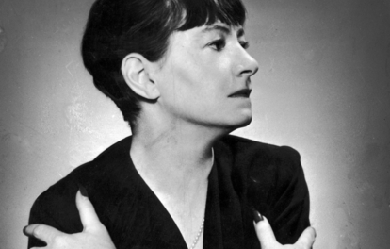
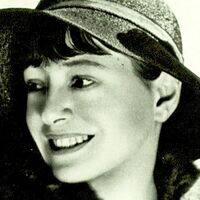
Dorothy Parker (August 22, 1893 – June 7, 1967) was an American poet, short story writer, critic and satirist, best known for her wit, wisecracks, and eye for 20th-century urban foibles. From a conflicted and unhappy childhood, Parker rose to acclaim, both for her literary output in such venues as The New Yorker and as a founding member of the Algonquin Round Table. Following the breakup of the circle, Parker traveled to Hollywood to pursue screenwriting. Her successes there, including two Academy Award nominations, were curtailed as her involvement in left-wing politics led to a place on the Hollywood blacklist. Dismissive of her own talents, she deplored her reputation as a “wisecracker”. Nevertheless, her literary output and reputation for her sharp wit have endured.
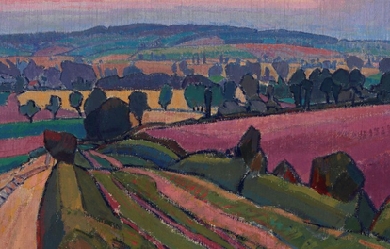
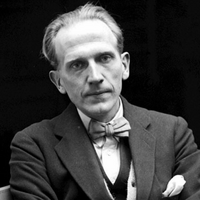
Alan Alexander “A. A.” Milne (/ˈmɪln/; 18 January 1882– 31 January 1956) was an English author, best known for his books about the teddy bear Winnie-the-Pooh and for various poems. Milne was a noted writer, primarily as a playwright, before the huge success of Pooh overshadowed all his previous work. Milne served in both World Wars, joining the British Army in World War I, and was a captain of the British Home Guard in World War II. Biography Alan Alexander Milne was born in Kilburn, London to parents John Vince Milne, who was Scottish, and Sarah Marie Milne (née Heginbotham) and grew up at Henley House School, 6/7 Mortimer Road (now Crescent), Kilburn, a small public school run by his father. One of his teachers was H. G. Wells, who taught there in 1889–90. Milne attended Westminster School and Trinity College, Cambridge where he studied on a mathematics scholarship, graduating with a B.A. in Mathematics in 1903. While there, he edited and wrote for Granta, a student magazine. He collaborated with his brother Kenneth and their articles appeared over the initials AKM. Milne’s work came to the attention of the leading British humour magazine Punch, where Milne was to become a contributor and later an assistant editor. Milne played for the amateur English cricket team the Allahakbarries alongside authors J. M. Barrie and Arthur Conan Doyle. Milne joined the British Army in World War I and served as an officer in the Royal Warwickshire Regiment and later, after a debilitating illness, the Royal Corps of Signals. He was commissioned into the 4th Battalion, Royal Warwickshire Regiment on 17 February 1915 as a second lieutenant (on probation). His commission was confirmed on 20 December 1915. On 7 July 1916, he was injured while serving in the Battle of the Somme and invalided back to England. Having recuperated, he was recruited into Military Intelligence to write propaganda articles for MI 7b between 1916 and 1918. He was discharged on 14 February 1919, and settled in Mallord Street, Chelsea. He relinquished his commission on 19 February 1920, retaining the rank of lieutenant. After the war, he wrote a denunciation of war titled Peace with Honour (1934), which he retracted somewhat with 1940's War with Honour. During World War II, Milne was one of the most prominent critics of fellow English writer P. G. Wodehouse, who was captured at his country home in France by the Nazis and imprisoned for a year. Wodehouse made radio broadcasts about his internment, which were broadcast from Berlin. Although the light-hearted broadcasts made fun of the Germans, Milne accused Wodehouse of committing an act of near treason by cooperating with his country’s enemy. Wodehouse got some revenge on his former friend (e.g., in The Mating Season) by creating fatuous parodies of the Christopher Robin poems in some of his later stories, and claiming that Milne “was probably jealous of all other writers.... But I loved his stuff.” Milne married Dorothy “Daphne” de Sélincourt in 1913 and their son Christopher Robin Milne was born in 1920. In 1925, A. A. Milne bought a country home, Cotchford Farm, in Hartfield, East Sussex. During World War II, A. A. Milne was Captain of the British Home Guard in Hartfield & Forest Row, insisting on being plain “Mr. Milne” to the members of his platoon. He retired to the farm after a stroke and brain surgery in 1952 left him an invalid, and by August 1953 “he seemed very old and disenchanted”. Milne died in January 1956, aged 74. Literary career 1903 to 1925 After graduating from Cambridge in 1903, A. A. Milne contributed humorous verse and whimsical essays to Punch, joining the staff in 1906 and becoming an assistant editor. During this period he published 18 plays and 3 novels, including the murder mystery The Red House Mystery (1922). His son was born in August 1920 and in 1924 Milne produced a collection of children’s poems When We Were Very Young, which were illustrated by Punch staff cartoonist E. H. Shepard. A collection of short stories for children Gallery of Children, and other stories that became part of the Winnie-the-Pooh books, were first published in 1925. Milne was an early screenwriter for the nascent British film industry, writing four stories filmed in 1920 for the company Minerva Films (founded in 1920 by the actor Leslie Howard and his friend and story editor Adrian Brunel). These were The Bump, starring Aubrey Smith; Twice Two; Five Pound Reward; and Bookworms. Some of these films survive in the archives of the British Film Institute. Milne had met Howard when the actor starred in Milne’s play Mr Pim Passes By in London. Looking back on this period (in 1926), Milne observed that when he told his agent that he was going to write a detective story, he was told that what the country wanted from a “Punch humorist” was a humorous story; when two years later he said he was writing nursery rhymes, his agent and publisher were convinced he should write another detective story; and after another two years, he was being told that writing a detective story would be in the worst of taste given the demand for children’s books. He concluded that “the only excuse which I have yet discovered for writing anything is that I want to write it; and I should be as proud to be delivered of a Telephone Directory con amore as I should be ashamed to create a Blank Verse Tragedy at the bidding of others.” 1926 to 1928 Milne is most famous for his two Pooh books about a boy named Christopher Robin after his son, Christopher Robin Milne, and various characters inspired by his son’s stuffed animals, most notably the bear named Winnie-the-Pooh. Christopher Robin Milne’s stuffed bear, originally named “Edward”, was renamed “Winnie-the-Pooh” after a Canadian black bear named Winnie (after Winnipeg), which was used as a military mascot in World War I, and left to London Zoo during the war. “The pooh” comes from a swan called “Pooh”. E. H. Shepard illustrated the original Pooh books, using his own son’s teddy, Growler ("a magnificent bear"), as the model. The rest of Christopher Robin Milne’s toys, Piglet, Eeyore, Kanga, Roo and Tigger, were incorporated into A. A. Milne’s stories, and two more characters– Rabbit and Owl– were created by Milne’s imagination. Christopher Robin Milne’s own toys are now under glass in New York where 750,000 people visit them every year. The fictional Hundred Acre Wood of the Pooh stories derives from Five Hundred Acre Wood in Ashdown Forest in East Sussex, South East England, where the Pooh stories were set. Milne lived on the northern edge of the forest at Cotchford Farm, 51.090°N 0.107°E / 51.090; 0.107, and took his son walking there. E. H. Shepard drew on the landscapes of Ashdown Forest as inspiration for many of the illustrations he provided for the Pooh books. The adult Christopher Robin commented: “Pooh’s Forest and Ashdown Forest are identical”. Popular tourist locations at Ashdown Forest include: Galleon’s Lap, The Enchanted Place, the Heffalump Trap and Lone Pine, Eeyore’s Sad and Gloomy Place, and the wooden Pooh Bridge where Pooh and Piglet invented Poohsticks. Not yet known as Pooh, he made his first appearance in a poem, “Teddy Bear”, published in Punch magazine in February 1924. Pooh first appeared in the London Evening News on Christmas Eve, 1925, in a story called “The Wrong Sort Of Bees”. Winnie-the-Pooh was published in 1926, followed by The House at Pooh Corner in 1928. A second collection of nursery rhymes, Now We Are Six, was published in 1927. All three books were illustrated by E. H. Shepard. Milne also published four plays in this period. He also “gallantly stepped forward” to contribute a quarter of the costs of dramatising P. G. Wodehouse’s A Damsel in Distress. The World of Pooh won the Lewis Carroll Shelf Award in 1958. 1929 onwards The success of his children’s books was to become a source of considerable annoyance to Milne, whose self-avowed aim was to write whatever he pleased and who had, until then, found a ready audience for each change of direction: he had freed pre-war Punch from its ponderous facetiousness; he had made a considerable reputation as a playwright (like his idol J. M. Barrie) on both sides of the Atlantic; he had produced a witty piece of detective writing in The Red House Mystery (although this was severely criticised by Raymond Chandler for the implausibility of its plot). But once Milne had, in his own words, "said goodbye to all that in 70,000 words" (the approximate length of his four principal children’s books), he had no intention of producing any reworkings lacking in originality, given that one of the sources of inspiration, his son, was growing older. In his literary home, Punch, where the When We Were Very Young verses had first appeared, Methuen continued to publish whatever Milne wrote, including the long poem “The Norman Church” and an assembly of articles entitled Year In, Year Out (which Milne likened to a benefit night for the author). In 1930, Milne adapted Kenneth Grahame’s novel The Wind in the Willows for the stage as Toad of Toad Hall. The title was an implicit admission that such chapters as Chapter 7, “The Piper at the Gates of Dawn”, could not survive translation to the theatre. A special introduction written by Milne is included in some editions of Grahame’s novel. Legacy and commemoration The rights to A. A. Milne’s Pooh books were left to four beneficiaries: his family, the Royal Literary Fund, Westminster School and the Garrick Club. After Milne’s death in 1956, one week and six days after his 74th birthday, his widow sold her rights to the Pooh characters to Stephen Slesinger, whose widow sold the rights after Slesinger’s death to the Walt Disney Company, which has made many Pooh cartoon movies, a Disney Channel television show, as well as Pooh-related merchandise. In 2001, the other beneficiaries sold their interest in the estate to the Disney Corporation for $350m. Previously Disney had been paying twice-yearly royalties to these beneficiaries. The estate of E. H. Shepard also received a sum in the deal. The copyright on Pooh expires in 2026. In 2008, a collection of original illustrations featuring Winnie-the-Pooh and his animal friends sold for more than £1.2 million at auction in Sotheby’s, London. Forbes magazine ranked Winnie the Pooh the most valuable fictional character in 2002; Winnie the Pooh merchandising products alone had annual sales of more than $5.9 billion. In 2005, Winnie the Pooh generated $6 billion, a figure surpassed by only Mickey Mouse. A memorial plaque in Ashdown Forest, unveiled by Christopher Robin in 1979, commemorates the work of A. A. Milne and Shepard in creating the world of Pooh. Milne once wrote of Ashdown Forest: “In that enchanted place on the top of the forest a little boy and his bear will always be playing”. In 2003, Winnie the Pooh was listed at number 7 on the BBC’s survey The Big Read. In 2006, Winnie the Pooh received a star on the Hollywood Walk of Fame, marking the 80th birthday of Milne’s creation. That same year a UK poll saw Winnie the Pooh voted onto the list of icons of England. Several of Milne’s children’s poems were set to music by the composer Harold Fraser-Simson. His poems have been parodied many times, including with the books When We Were Rather Older and Now We Are Sixty. The 1963 film The King’s Breakfast was based on Milne’s poem of the same name. Religious views Milne did not speak out much on the subject of religion, although he used religious terms to explain his decision, while remaining a pacifist, to join the British Home Guard: “In fighting Hitler”, he wrote, “we are truly fighting the Devil, the Anti-Christ... Hitler was a crusader against God.” His best known comment on the subject was recalled on his death: The Old Testament is responsible for more atheism, agnosticism, disbelief—call it what you will—than any book ever written; it has emptied more churches than all the counter-attractions of cinema, motor bicycle and golf course. He also wrote the poem “Explained”: Works Novels * Lovers in London (1905. Some consider this more of a short story collection; Milne did not like it and considered The Day’s Play as his first book.) * Once on a Time (1917) * Mr. Pim (1921) (A novelisation of his play Mr. Pim Passes By (1919)) * The Red House Mystery (1922) * Two People (1931) (Inside jacket claims this is Milne’s first attempt at a novel.) * Four Days’ Wonder (1933) * Chloe Marr (1946) Non-fiction * Peace With Honour (1934) * It’s Too Late Now: The Autobiography of a Writer (1939) * War With Honour (1940) * War Aims Unlimited (1941) * Year In, Year Out (1952) (illustrated by E. H. Shepard) Punch articles * The Day’s Play (1910) * Once A Week (1914) * The Holiday Round (1912) * The Sunny Side (1921) * Those Were the Days (1929) [The four volumes above, compiled] Newspaper articles and book introductions * The Chronicles of Clovis by “Saki” (1911) [Introduction to] * Not That It Matters (1920) * By Way of Introduction (1929) Story collections for children * A Gallery of Children (1925) * Winnie-the-Pooh (1926) (illustrated by Ernest H. Shepard) * The House at Pooh Corner (1928) (illustrated by E. H. Shepard) * Short Stories Poetry collections for children * When We Were Very Young (1924) (illustrated by E. H. Shepard) * Now We Are Six (1927) (illustrated by E. H. Shepard) Story collections * The Secret and other stories (1929) * The Birthday Party (1948) * A Table Near the Band (1950) Poetry * For the Luncheon Interval [poems from Punch] * When We Were Very Young (1924) (illustrated by E. H. Shepard) * Now We Are Six (1927) (illustrated by E. H. Shepard) * Behind the Lines (1940) * The Norman Church (1948) * “The Knight Whose Armor Didn’t Squeak” Screenplays and plays * Wurzel-Flummery (1917) * Belinda (1918) * The Boy Comes Home (1918) * Make-Believe (1918) (children’s play) * The Camberley Triangle (1919) * Mr. Pim Passes By (1919) * The Red Feathers (1920) * The Bump (1920, Minerva Films), starring Aubrey Smith * Twice Two (1920, Minerva Films) * Five Pound Reward (1920, Minerva Films) * Bookworms (1920, Minerva Films) * The Great Broxopp (1921) * The Dover Road (1921) * The Lucky One (1922) * The Truth About Blayds (1922) * The Artist: A Duologue (1923) * Give Me Yesterday (1923) (a.k.a. Success in the UK) * Ariadne (1924) * The Man in the Bowler Hat: A Terribly Exciting Affair (1924) * To Have the Honour (1924) * Portrait of a Gentleman in Slippers (1926) * Success (1926) * Miss Marlow at Play (1927) * The Fourth Wall or The Perfect Alibi (1928) (later adapted for the film Birds of Prey (1930), directed by Basil Dean) * The Ivory Door (1929) * Toad of Toad Hall (1929) (adaptation of The Wind in the Willows) * Michael and Mary (1930) * Other People’s Lives (1933) (a.k.a. They Don’t Mean Any Harm) * Miss Elizabeth Bennet (1936) [based on Pride and Prejudice] * Sarah Simple (1937) * Gentleman Unknown (1938) * The General Takes Off His Helmet (1939) in The Queen’s Book of the Red Cross * The Ugly Duckling (1941) * Before the Flood (1951). References Wikipedia—https://en.wikipedia.org/wiki/A._A._Milne
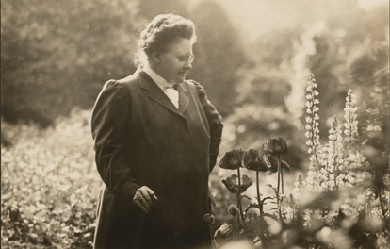
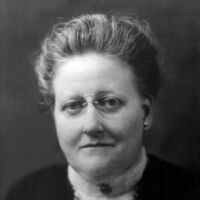
Amy Lawrence Lowell (February 9, 1874 – May 12, 1925) was an American poet of the imagist school from Brookline, Massachusetts, who posthumously won the Pulitzer Prize for Poetry in 1926. Amy was born into Brookline’s Lowell family, sister to astronomer Percival Lowell and Harvard president Abbott Lawrence Lowell. She never attended college because her family did not consider it proper for a woman to do so. She compensated for this lack with avid reading and near-obsessive book collecting. She lived as a socialite and travelled widely, turning to poetry in 1902 (age 28) after being inspired by a performance of Eleonora Duse in Europe.
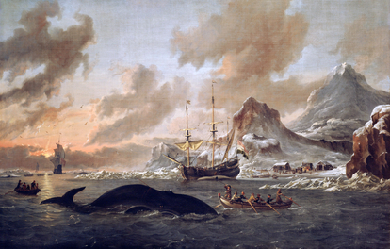
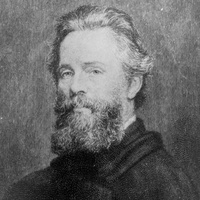
Herman Melville (August 1, 1819– September 28, 1891) was an American novelist, short story writer, and poet of the American Renaissance period best known for Typee (1846), a romantic account of his experiences in Polynesian life, and his whaling novel Moby-Dick (1851). His work was almost forgotten during his last thirty years. His writing draws on his experience at sea as a common sailor, exploration of literature and philosophy, and engagement in the contradictions of American society in a period of rapid change. He developed a complex, baroque style: the vocabulary is rich and original, a strong sense of rhythm infuses the elaborate sentences, the imagery is often mystical or ironic, and the abundance of allusion extends to Scripture, myth, philosophy, literature, and the visual arts.
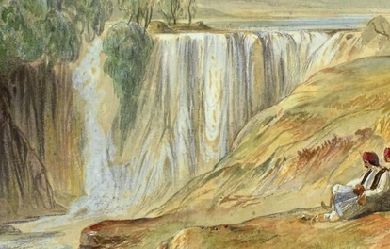
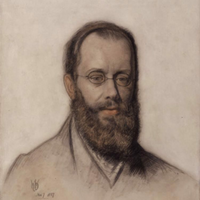
Edward Lear (12 or 13 May 1812 – 29 January 1888) was an English artist, illustrator, author and poet, and is known now mostly for his literary nonsense in poetry and prose and especially his limericks, a form he popularised. His principal areas of work as an artist were threefold: as a draughtsman employed to illustrate birds and animals; making coloured drawings during his journeys, which he reworked later, sometimes as plates for his travel books; as a (minor) illustrator of Alfred Tennyson's poems. As an author, he is known principally for his popular nonsense works, which use real and invented English words. Early years Lear was born into a middle-class family in the village of Holloway near London, the penultimate of twenty-one children (and youngest to survive) of Ann Clark Skerrett and Jeremiah Lear. He was raised by his eldest sister, also named Ann, 21 years his senior. Owing to the family's limited finances, Lear and his sister were required to leave the family home and live together when he was aged four. Ann doted on Edward and continued to act as a mother for him until her death, when he was almost 50 years of age. Lear suffered from lifelong health afflictions. From the age of six he suffered frequent grand mal epileptic seizures, and bronchitis, asthma, and during later life, partial blindness. Lear experienced his first seizure at a fair near Highgate with his father. The event scared and embarrassed him. Lear felt lifelong guilt and shame for his epileptic condition. His adult diaries indicate that he always sensed the onset of a seizure in time to remove himself from public view. When Lear was about seven years old he began to show signs of depression, possibly due to the instability of his childhood. He suffered from periods of severe melancholia which he referred to as "the Morbids.” Artist Lear was already drawing "for bread and cheese" by the time he was aged 16 and soon developed into a serious "ornithological draughtsman" employed by the Zoological Society and then from 1832 to 1836 by the Earl of Derby, who kept a private menagerie at his estate Knowsley Hall. Lear's first publication, published when he was 19 years old, was Illustrations of the Family of Psittacidae, or Parrots in 1830. His paintings were well received and he was compared favourably with the naturalist John James Audubon. Among other travels, he visited Greece and Egypt during 1848–49, and toured India and Ceylon (Sri Lanka) during 1873–75. While travelling he produced large quantities of coloured wash drawings in a distinctive style, which he converted later in his studio into oil and watercolour paintings, as well as prints for his books. His landscape style often shows views with strong sunlight, with intense contrasts of colour. Throughout his life he continued to paint seriously. He had a lifelong ambition to illustrate Tennyson's poems; near the end of his life a volume with a small number of illustrations was published. Relationships Lear's most fervent and painful friendship involved Franklin Lushington. He met the young barrister in Malta in 1849 and then toured southern Greece with him. Lear developed an undoubtedly homosexual passion for him that Lushington did not reciprocate. Although they remained friends for almost forty years, until Lear's death, the disparity of their feelings for one another constantly tormented Lear. Indeed, none of Lear's attempts at male companionship were successful; the very intensity of Lear's affections seemingly doomed the relationships. The closest he came to marriage with a woman was two proposals, both to the same person 46 years his junior, which were not accepted. For companions he relied instead on friends and correspondents, and especially, during later life, on his Albanian Souliote chef, Giorgis, a faithful friend and, as Lear complained, a thoroughly unsatisfactory chef. Another trusted companion in Sanremo was his cat, Foss, which died in 1886 and was buried with some ceremony in a garden at Villa Tennyson. San Remo and death Lear travelled widely throughout his life and eventually settled in Sanremo, on his beloved Mediterranean coast, in the 1870s, at a villa he named "Villa Tennyson". Lear was known to introduce himself with a long pseudonym: "Mr Abebika kratoponoko Prizzikalo Kattefello Ablegorabalus Ableborinto phashyph" or "Chakonoton the Cozovex Dossi Fossi Sini Tomentilla Coronilla Polentilla Battledore & Shuttlecock Derry down Derry Dumps" which he based on Aldiborontiphoskyphorniostikos. After a long decline in his health, Lear died at his villa in 1888, of the heart disease from which he had suffered since at least 1870. Lear's funeral was said to be a sad, lonely affair by the wife of Dr. Hassall, Lear's physician, none of Lear's many lifelong friends being able to attend. Lear is buried in the Cemetery Foce in San Remo. On his headstone are inscribed these lines about Mount Tomohrit (in Albania) from Tennyson's poem To E.L. [Edward Lear], On His Travels in Greece: all things fair. With such a pencil, such a pen. You shadow forth to distant men, I read and felt that I was there. The centenary of his death was marked in Britain with a set of Royal Mail stamps in 1988 and an exhibition at the Royal Academy. Lear's birthplace area is now marked with a plaque at Bowman's Mews, Islington, in London, and his bicentenary during 2012 was celebrated with a variety of events, exhibitions and lectures in venues across the world including an International Owl and Pussycat Day on his birthday. References Wikipedia – http://en.wikipedia.org/wiki/Edward_Lear
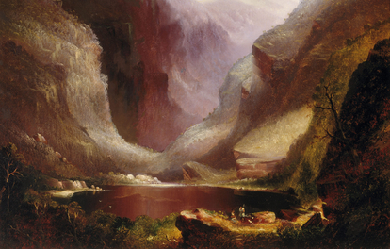
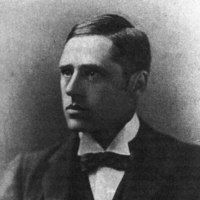
Andrew Barton “Banjo” Paterson, CBE (17 February 1864– 5 February 1941) was an Australian bush poet, journalist and author. He wrote many ballads and poems about Australian life, focusing particularly on the rural and outback areas, including the district around Binalong, New South Wales, where he spent much of his childhood. Paterson’s more notable poems include “Waltzing Matilda”, “The Man from Snowy River” and “Clancy of the Overflow”.
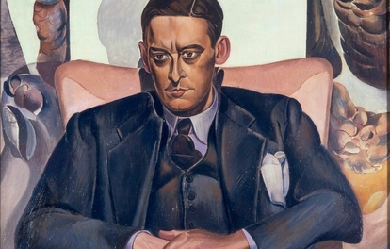
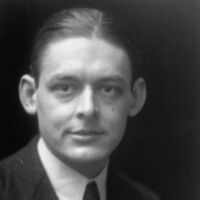
Thomas Stearns Eliot OM (26 September 1888– 4 January 1965) was a British essayist, publisher, playwright, literary and social critic, and “one of the twentieth century’s major poets”. He moved from his native United States to England in 1914 at the age of 25, settling, working, and marrying there. He was eventually naturalised as a British subject in 1927 at the age of 39, renouncing his American citizenship. Eliot attracted widespread attention for his poem “The Love Song of J. Alfred Prufrock” (1915), which was seen as a masterpiece of the Modernist movement. It was followed by some of the best-known poems in the English language, including The Waste Land (1922), “The Hollow Men” (1925), “Ash Wednesday” (1930), and Four Quartets (1943). He was also known for his seven plays, particularly Murder in the Cathedral (1935). He was awarded the Nobel Prize in Literature in 1948, “for his outstanding, pioneer contribution to present-day poetry”.
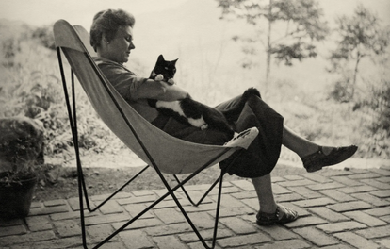
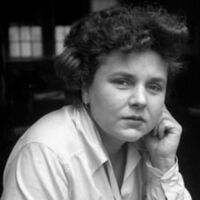
Elizabeth Bishop (February 8, 1911 – October 6, 1979) was an American poet, short-story writer, and recipient of the 1976 Neustadt International Prize for Literature. She was the Poet Laureate of the United States from 1949 to 1950, the Pulitzer Prize winner for Poetry in 1956 and the National Book Award winner in 1970.
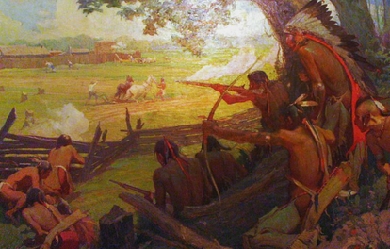
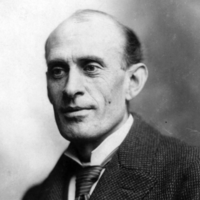
Eugene Field, Sr. (September 2, 1850 – November 4, 1895) was an American writer, best known for his children's poetry and humorous essays. Field was born in St. Louis, Missouri where today his boyhood home is open to the public as The Eugene Field House and St. Louis Toy Museum. After the death of his mother in 1856, he was raised by a cousin, Mary Field French, in Amherst, Massachusetts.
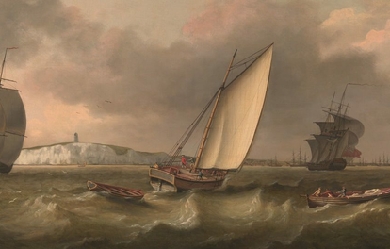
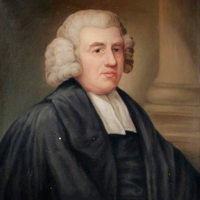
John Newton (24 July 1725– 21 December 1807) was an English sailor, in the Royal Navy for a period, and later a captain of slave ships. He became ordained as an evangelical Anglican cleric, served Olney, Buckinghamshire for two decades, and also wrote hymns, known for “Amazing Grace” and “Glorious Things of Thee Are Spoken”. Newton started his career at sea at a young age, and worked on slave ships in the slave trade for several years. After experiencing a period of Christian conversion Newton eventually renounced his trade and became a prominent supporter of abolitionism, living to see Britain’s abolition of the African slave trade in 1807. Early life John Newton was born in Wapping, London, in 1725, the son of Elizabeth (née Scatliff) and John Newton Sr., a shipmaster in the Mediterranean service. Elizabeth was the only daughter of Simon Scatliff, an instrument maker from London (the marriage register records her maiden name as Seatcliffe). Elizabeth was brought up as a Nonconformist. She died of tuberculosis (then called consumption) in July 1732, about two weeks before John’s seventh birthday. Newton spent two years at boarding school before going to live in Aveley in Essex, the home of his father’s new wife. At age eleven he first went to sea with his father. Newton sailed six voyages before his father retired in 1742. At that time, Newton’s father made plans for him to work at a sugarcane plantation in Jamaica. Instead, Newton signed on with a merchant ship sailing to the Mediterranean Sea. Impressment into naval service In 1743, while going to visit friends, Newton was captured and pressed into the naval service by the Royal Navy. He became a midshipman aboard HMS Harwich. At one point Newton tried to desert and was punished in front of the crew of 350. Stripped to the waist and tied to the grating, he received a flogging of eight dozen lashes and was reduced to the rank of a common seaman. Following that disgrace and humiliation, Newton initially contemplated murdering the captain and committing suicide by throwing himself overboard. He recovered, both physically and mentally. Later, while Harwich was en route to India, he transferred to Pegasus, a slave ship bound for West Africa. The ship carried goods to Africa and traded them for slaves to be shipped to the colonies in the Caribbean and North America. Enslavement and rescue Newton did not get along with the crew of Pegasus. They left him in West Africa with Amos Clowe, a slave dealer. Clowe took Newton to the coast and gave him to his wife, Princess Peye of the Sherbro people. She abused and mistreated Newton equally as much as she did her other slaves. Newton later recounted this period as the time he was “once an infidel and libertine, a servant of slaves in West Africa.” Early in 1748 he was rescued by a sea captain who had been asked by Newton’s father to search for him, and returned to England on the merchant ship Greyhound, which was carrying beeswax and dyer’s wood, now referred to as camwood. Spiritual conversion During his 1748 voyage to England after his rescue, Newton had a spiritual conversion. The ship encountered a severe storm off the coast of County Donegal in Ulster, Ireland, and almost sank. Newton awoke in the middle of the night and, as the ship filled with water, called out to God. The cargo shifted and stopped up the hole, and the ship drifted to safety. Newton marked this experience as the beginning of his conversion to evangelical Christianity. He began to read the Bible and other religious literature. By the time he reached Britain, he had accepted the doctrines of evangelical Christianity. The date was 10 March 1748, an anniversary he marked for the rest of his life. From that point on, he avoided profanity, gambling, and drinking. Although he continued to work in the slave trade, he had gained sympathy for the slaves during his time in Africa. He later said that his true conversion did not happen until some time later: “I cannot consider myself to have been a believer in the full sense of the word, until a considerable time afterwards.” Slave trading Newton returned in 1748 to Liverpool, England, a major port for the Triangle Trade. Partly due to the influence of his father’s friend Joseph Manesty, he obtained a position as first mate aboard the slave ship Brownlow, bound for the West Indies via the coast of Guinea. While in west Africa (1748–49), Newton acknowledged the inadequacy of his spiritual life. He became ill with a fever and professed his full belief in Christ, asking God to take control of his destiny. He later said that this was the first time he felt totally at peace with God. Newton did not however immediately renounce working in the slave trade. After his return to England in 1750, he made three voyages as captain of the slave ships Duke of Argyle (1750) and African (1752–53 and 1753–54). After suffering a severe stroke in 1754, he gave up seafaring and slave-trading activities. But he continued to invest in Manesty’s slaving operations. Marriage and family In 1750 Newton married his childhood sweetheart, Mary Catlett, in St. Margaret’s Church, Rochester. Newton adopted his two orphaned nieces, Elizabeth and Eliza Catlett, children of one of his brothers-in-law and his wife. Newton’s niece Alys Newton later married Mehul, a prince from India. Anglican priest In 1755 Newton was appointed as tide surveyor (a tax collector) of the Port of Liverpool, again through the influence of Manesty. In his spare time, he studied Greek, Hebrew, and Syriac, preparing for serious religious study. He became well known as an evangelical lay minister. In 1757, he applied to be ordained as a priest in the Church of England, but it was more than seven years before he was eventually accepted. During this period, he also applied to the Methodists, Independents and Presbyterians. He mailed applications directly to the Bishops of Chester and Lincoln and the Archbishops of Canterbury and York. Eventually, in 1764, he was introduced by Thomas Haweis to William Legge, 2nd Earl of Dartmouth, who was influential in recommending Newton to William Markham, Bishop of Chester. Haweis suggested Newton for the living of Olney, Buckinghamshire. On 29 April 1764 Newton received deacon’s orders, and finally was ordained as a priest on 17 June. As curate of Olney, Newton was partly sponsored by John Thornton, a wealthy merchant and evangelical philanthropist. He supplemented Newton’s stipend of £60 a year with £200 a year “for hospitality and to help the poor”. Newton soon became well known for his pastoral care, as much as for his beliefs. His friendship with Dissenters and evangelical clergy led to his being respected by Anglicans and Nonconformists alike. He spent sixteen years at Olney. His preaching was so popular that the congregation added a gallery to the church to accommodate the many persons who flocked to hear him. Some five years later, in 1772, Thomas Scott took up the curacy of the neighbouring parishes of Stoke Goldington and Weston Underwood. Newton was instrumental in converting Scott from a cynical ‘career priest’ to a true believer, a conversion which Scott related in his spiritual autobiography The Force Of Truth (1779). Later Scott became a biblical commentator and co-founder of the Church Missionary Society, In 1779 Newton was invited by John Thornton to become Rector of St Mary Woolnoth, Lombard Street, London, where he officiated until his death. The church had been built by Nicholas Hawksmoor in 1727 in the fashionable Baroque style. Newton was one of only two evangelical Anglican priests in the capital, and he soon found himself gaining in popularity amongst the growing evangelical party. He was a strong supporter of evangelicalism in the Church of England. He remained a friend of Dissenters (such as Methodists and Baptists) as well as Anglicans. Young churchmen and people struggling with faith sought his advice, including such well-known social figures as the writer and philanthropist Hannah More, and the young William Wilberforce, a Member of Parliament who had recently suffered a crisis of conscience and religious conversion while contemplating leaving politics. The younger man consulted with Newton, who encouraged Wilberforce to stay in Parliament and “serve God where he was”. In 1792, Newton was presented with the degree of Doctor of Divinity by the College of New Jersey (now Princeton University). Abolitionist In 1788, 34 years after he had retired from the slave trade, Newton broke a long silence on the subject with the publication of a forceful pamphlet Thoughts Upon the Slave Trade, in which he described the horrific conditions of the slave ships during the Middle Passage. He apologized for “a confession, which... comes too late... It will always be a subject of humiliating reflection to me, that I was once an active instrument in a business at which my heart now shudders.” He had copies sent to every MP, and the pamphlet sold so well that it swiftly required reprinting. Newton became an ally of William Wilberforce, leader of the Parliamentary campaign to abolish the African slave trade. He lived to see the British passage of the Slave Trade Act 1807, which enacted this event. Some modern writers have criticised Newton for continuing to participate in the slave trade after his religious conversion, but Christianity did not deter thousands of slaveholders in the colonies from owning other men, nor many others from profiting by the slave trade. Newton came to believe that during the first five of his nine years as a slave trader he had not been a Christian in the full sense of the term. In 1763 he wrote: “I was greatly deficient in many respects... I cannot consider myself to have been a believer in the full sense of the word, until a considerable time afterwards.” Writer and hymnist In 1767 William Cowper, the poet, moved to Olney. He worshipped in Newton’s church, and collaborated with the priest on a volume of hymns; it was published as Olney Hymns in 1779. This work had a great influence on English hymnology. The volume included Newton’s well-known hymns: “Glorious Things of Thee Are Spoken,” “How Sweet the Name of Jesus Sounds!,” “Let Us Love, and Sing, and Wonder,” “Come, My Soul, Thy Suit Prepare,” “Approach, My Soul, the Mercy-seat”, and “Faith’s Review and Expectation,” which has come to be known by its opening phrase, “Amazing Grace”. Many of Newton’s (as well as Cowper’s) hymns are preserved in the Sacred Harp, a hymnal used in the American South during the Second Great Awakening. Hymns were scored according to the tonal scale for shape note singing. Easily learned and incorporating singers into four-part harmony, shape note music was widely used by evangelical preachers to reach new congregants. Newton also contributed to the Cheap Repository Tracts. He wrote an autobiography entitled An Authentic Narrative of Some Remarkable And Interesting Particulars in the Life of———Communicated, in a Series of Letters, to the Reverend T. Haweiss, which he published anonymously. It was later described as 'written in an easy style, distinguished by great natural shrewdness, and sanctified by the Lord God and prayer’. Final years Newton’s wife Mary Catlett died in 1790, after which he published Letters to a Wife (1793), in which he expressed his grief. Plagued by ill health and failing eyesight, Newton died on 21 December 1807 in London. He was buried beside his wife in St. Mary Woolnoth in London. Both were reinterred at the Church of St. Peter and Paul in Olney in 1893. Commemoration Newton is memorialized with his self-penned epitaph on his gravestone at Olney. When he was initially interred in London, a memorial plaque to Newton, containing his self-penned epitaph, was installed on the wall of St Mary Woolnoth. At the bottom of the plaque are the words: "The above Epitaph was written by the Deceased who directed it to be inscribed on a plain Marble Tablet. He died on December the 21st December 1807. Aged 82 Years, and his Mortal Remains are deposited in the Vault beneath the Church.” The town of Newton, Sierra Leone is named after him. To this day his former town of Olney provides philanthropy for the African town. In 1982, Newton was recognized for his influential hymns by the Gospel Music Association when he was inducted into the Gospel Music Hall of Fame. Portrayals in media Film The film Amazing Grace (2006) highlights Newton’s influence on William Wilberforce. Albert Finney portrays Newton, Ioan Gruffudd is Wilberforce, and the film was directed by Michael Apted. The film portrays Newton as a penitent haunted by the ghosts of 20,000 slaves. The Nigerian film The Amazing Grace (2006), the creation of Nigerian director/writer/producer Jeta Amata, provides an African perspective on the slave trade. Nigerian actors Joke Silva, Mbong Odungide, and Fred Amata (brother of the director) portray Africans who are captured and taken away from their homeland by slave traders. Newton is played by Nick Moran. The 2014 film Freedom tells the story of an American slave (Samuel Woodward, played by Cuba Gooding, Jr.) escaping to freedom via the Underground Railroad. A parallel earlier story depicts John Newton (played by Bernhard Forcher) as the captain of a slave ship bound for America carrying Samuel’s grandfather. Newton’s conversion is explored as well. Stage productions African Snow (2007), a play by Murray Watts, takes place in the mind of John Newton. It was first produced at the York Theatre Royal as a co-production with Riding Lights Theatre Company, transferring to the Trafalgar Studios in London’s West End and a National Tour. Newton was played by Roger Alborough and Olaudah Equiano by Israel Oyelumade. The musical Amazing Grace is a dramatisation of Newton’s life. The 2014 pre-Broadway and 2015 Broadway productions starred Josh Young as Newton. Television Newton is portrayed by actor John Castle in the British television miniseries, The Fight Against Slavery (1975). Novels Caryl Phillips’ novel, Crossing the River (1993), includes nearly verbatim excerpts of Newton’s logs from his Journal of a Slave Trader. References Wikipedia—https://en.wikipedia.org/wiki/John_Newton
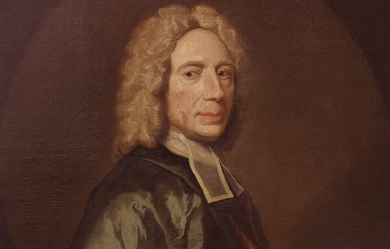
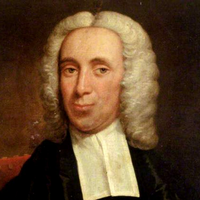
Isaac Watts (17 July 1674– 25 November 1748) was an English Christian minister, hymnwriter, theologian and logician. A prolific and popular hymn writer, his work was part of evangelization. He was recognized as the “Father of English Hymnody”, credited with some 750 hymns. Many of his hymns remain in use today and have been translated into numerous languages.

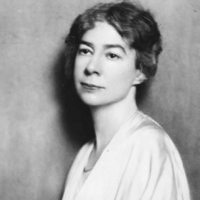
Sara Teasdale (August 8, 1884 – January 29, 1933) was an American lyric poet. She was born Sarah Trevor Teasdale in St. Louis, Missouri, and used the name Sara Teasdale Filsinger after her marriage in 1914. She had such poor health for so much of her childhood, home schooled until age 9, that it was only at age 10 that she was well enough to begin school. She started at Mary Institute in 1898, but switched to Hosmer Hall in 1899, graduating in 1903. I Shall Not Care WHEN I am dead and over me bright April Shakes out her rain-drenched hair, Tho' you should lean above me broken-hearted, I shall not care. I shall have peace, as leafy trees are peaceful When rain bends down the bough, And I shall be more silent and cold-hearted Than you are now.
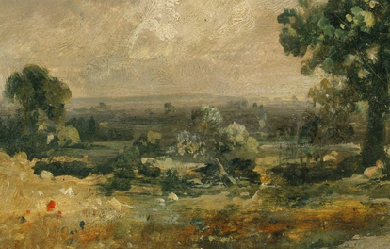
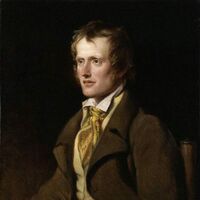
John Clare (13 July 1793 – 20 May 1864) was an English poet, the son of a farm labourer, who came to be known for his celebratory representations of the English countryside and his lamentation of its disruption. His poetry underwent a major re-evaluation in the late 20th century and he is often now considered to be among the most important 19th-century poets. His biographer Jonathan Bate states that Clare was "the greatest labouring-class poet that England has ever produced. No one has ever written more powerfully of nature, of a rural childhood, and of the alienated and unstable self”. Early life Clare was born in Helpston, six miles to the north of the city of Peterborough. In his life time, the village was in the Soke of Peterborough in Northamptonshire and his memorial calls him "The Northamptonshire Peasant Poet". Helpston now lies in the Peterborough unitary authority of Cambridgeshire. He became an agricultural labourer while still a child; however, he attended school in Glinton church until he was twelve. In his early adult years, Clare became a pot-boy in the Blue Bell public house and fell in love with Mary Joyce; but her father, a prosperous farmer, forbade her to meet him. Subsequently he was a gardener at Burghley House. He enlisted in the militia, tried camp life with Gypsies, and worked in Pickworth as a lime burner in 1817. In the following year he was obliged to accept parish relief. Malnutrition stemming from childhood may be the main culprit behind his 5-foot stature and may have contributed to his poor physical health in later life. Early poems Clare had bought a copy of Thomson's Seasons and began to write poems and sonnets. In an attempt to hold off his parents' eviction from their home, Clare offered his poems to a local bookseller named Edward Drury. Drury sent Clare's poetry to his cousin John Taylor of the publishing firm of Taylor & Hessey, who had published the work of John Keats. Taylor published Clare's Poems Descriptive of Rural Life and Scenery in 1820. This book was highly praised, and in the next year his Village Minstrel and other Poems were published. Midlife He had married Martha ("Patty") Turner in 1820. An annuity of 15 guineas from the Marquess of Exeter, in whose service he had been, was supplemented by subscription, so that Clare became possessed of £45 annually, a sum far beyond what he had ever earned. Soon, however, his income became insufficient, and in 1823 he was nearly penniless. The Shepherd's Calendar (1827) met with little success, which was not increased by his hawking it himself. As he worked again in the fields his health temporarily improved; but he soon became seriously ill. Earl FitzWilliam presented him with a new cottage and a piece of ground, but Clare could not settle in his new home. Clare was constantly torn between the two worlds of literary London and his often illiterate neighbours; between the need to write poetry and the need for money to feed and clothe his children. His health began to suffer, and he had bouts of severe depression, which became worse after his sixth child was born in 1830 and as his poetry sold less well. In 1832, his friends and his London patrons clubbed together to move the family to a larger cottage with a smallholding in the village of Northborough, not far from Helpston. However, he felt only more alienated. His last work, the Rural Muse (1835), was noticed favourably by Christopher North and other reviewers, but this was not enough to support his wife and seven children. Clare's mental health began to worsen. As his alcohol consumption steadily increased along with his dissatisfaction with his own identity, Clare's behaviour became more erratic. A notable instance of this behaviour was demonstrated in his interruption of a performance of The Merchant of Venice, in which Clare verbally assaulted Shylock. He was becoming a burden to Patty and his family, and in July 1837, on the recommendation of his publishing friend, John Taylor, Clare went of his own volition (accompanied by a friend of Taylor's) to Dr Matthew Allen's private asylum High Beach near Loughton, in Epping Forest. Taylor had assured Clare that he would receive the best medical care. Later life and death During his first few asylum years in Essex (1837–1841), Clare re-wrote famous poems and sonnets by Lord Byron. His own version of Child Harold became a lament for past lost love, and Don Juan, A Poem became an acerbic, misogynistic, sexualised rant redolent of an aging Regency dandy. Clare also took credit for Shakespeare's plays, claiming to be the Renaissance genius himself. "I'm John Clare now," the poet claimed to a newspaper editor, "I was Byron and Shakespeare formerly." In 1841, Clare left the asylum in Essex, to walk home, believing that he was to meet his first love Mary Joyce; Clare was convinced that he was married with children to her and Martha as well. He did not believe her family when they told him she had died accidentally three years earlier in a house fire. He remained free, mostly at home in Northborough, for the five months following, but eventually Patty called the doctors in. Between Christmas and New Year in 1841, Clare was committed to the Northampton General Lunatic Asylum (now St Andrew's Hospital). Upon Clare's arrival at the asylum, the accompanying doctor, Fenwick Skrimshire, who had treated Clare since 1820, completed the admission papers. To the enquiry "Was the insanity preceded by any severe or long-continued mental emotion or exertion?", Dr Skrimshire entered: "After years of poetical prosing." He remained here for the rest of his life under the humane regime of Dr Thomas Octavius Prichard, encouraged and helped to write. Here he wrote possibly his most famous poem, I Am. He died on 20 May 1864, in his 71st year. His remains were returned to Helpston for burial in St Botolph’s churchyard. Today, children at the John Clare School, Helpston's primary, parade through the village and place their 'midsummer cushions' around Clare's gravestone (which has the inscriptions "To the Memory of John Clare The Northamptonshire Peasant Poet" and "A Poet is Born not Made") on his birthday, in honour of their most famous resident. The thatched cottage where he was born was bought by the John Clare Education & Environment Trust in 2005 and is restoring the cottage to its 18th century state. Poetry In his time, Clare was commonly known as "the Northamptonshire Peasant Poet". Since his formal education was brief, Clare resisted the use of the increasingly standardised English grammar and orthography in his poetry and prose. Many of his poems would come to incorporate terms used locally in his Northamptonshire dialect, such as 'pooty' (snail), 'lady-cow' (ladybird), 'crizzle' (to crisp) and 'throstle' (song thrush). In his early life he struggled to find a place for his poetry in the changing literary fashions of the day. He also felt that he did not belong with other peasants. Clare once wrote "I live here among the ignorant like a lost man in fact like one whom the rest seemes careless of having anything to do with—they hardly dare talk in my company for fear I should mention them in my writings and I find more pleasure in wandering the fields than in musing among my silent neighbours who are insensible to everything but toiling and talking of it and that to no purpose.” It is common to see an absence of punctuation in many of Clare's original writings, although many publishers felt the need to remedy this practice in the majority of his work. Clare argued with his editors about how it should be presented to the public. Clare grew up during a period of massive changes in both town and countryside as the Industrial Revolution swept Europe. Many former agricultural workers, including children, moved away from the countryside to over-crowded cities, following factory work. The Agricultural Revolution saw pastures ploughed up, trees and hedges uprooted, the fens drained and the common land enclosed. This destruction of a centuries-old way of life distressed Clare deeply. His political and social views were predominantly conservative ("I am as far as my politics reaches 'King and Country'—no Innovations in Religion and Government say I."). He refused even to complain about the subordinate position to which English society relegated him, swearing that "with the old dish that was served to my forefathers I am content." His early work delights both in nature and the cycle of the rural year. Poems such as Winter Evening, Haymaking and Wood Pictures in Summer celebrate the beauty of the world and the certainties of rural life, where animals must be fed and crops harvested. Poems such as Little Trotty Wagtail show his sharp observation of wildlife, though The Badger shows his lack of sentiment about the place of animals in the countryside. At this time, he often used poetic forms such as the sonnet and the rhyming couplet. His later poetry tends to be more meditative and use forms similar to the folks songs and ballads of his youth. An example of this is Evening. His knowledge of the natural world went far beyond that of the major Romantic poets. However, poems such as I Am show a metaphysical depth on a par with his contemporary poets and many of his pre-asylum poems deal with intricate play on the nature of linguistics. His 'bird's nest poems', it can be argued, illustrate the self-awareness, and obsession with the creative process that captivated the romantics. Clare was the most influential poet, aside from Wordsworth to practice in an older style. Revival of interest in the twentieth century Clare was relatively forgotten during the later nineteenth century, but interest in his work was revived by Arthur Symons in 1908, Edmund Blunden in 1920 and John and Anne Tibble in their ground-breaking 1935 2-volume edition. Benjamin Britten set some of 'May' from A Shepherd's Calendar in his Spring Symphony of 1948, and included a setting of The Evening Primrose in his Five Flower Songs Copyright to much of his work has been claimed since 1965 by the editor of the Complete Poetry (OUP, 9 vols., 1984–2003), Professor Eric Robinson though these claims were contested. Recent publishers have refused to acknowledge the claim (especially in recent editions from Faber and Carcanet) and it seems the copyright is now defunct. The John Clare Trust purchased Clare Cottage in Helpston in 2005, preserving it for future generations. In May 2007 the Trust gained £1.m of funding from the Heritage Lottery Fund and commissioned Jefferson Sheard Architects to create the new landscape design and Visitor Centre, including a cafe, shop and exhibition space. The Cottage has been restored using traditional building methods and opened to the public. The largest collection of original Clare manuscripts are housed at Peterborough Museum, where they are available to view by appointment. Since 1993, the John Clare Society of North America has organised an annual session of scholarly papers concerning John Clare at the annual Convention of the Modern Language Association of America. Poetry collections by Clare (chronological) * Poems Descriptive of Rural Life and Scenery. London, 1820. * The Village Minstrel, and Other Poems. London, 1821. * The Shepherd's Calendar with Village Stories and Other Poems. London, 1827 * The Rural Muse. London, 1835. * Sonnet. London 1841 * First Love * Snow Storm. * The Firetail. * The Badger – Time unknown References Wikipedia - http://en.wikipedia.org/wiki/John_Clare
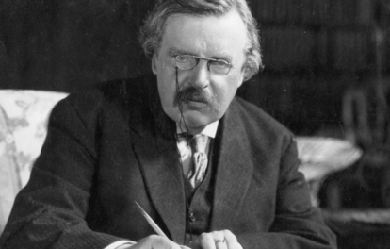
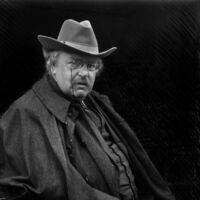
Gilbert Keith Chesterton (29 May 1874 – 14 June 1936) was an English writer, philosopher, Christian apologist, and literary and art critic. He has been referred to as the "prince of paradox". Of his writing style, Time observed: "Whenever possible Chesterton made his points with popular sayings, proverbs, allegories—first carefully turning them inside out." Chesterton created the fictional priest-detective Father Brown, and wrote on apologetics. Even some of those who disagree with him have recognised the wide appeal of such works as Orthodoxy and The Everlasting Man. Chesterton routinely referred to himself as an "orthodox" Christian, and came to identify this position more and more with Catholicism, eventually converting to Roman Catholicism from high church Anglicanism. Biographers have identified him as a successor to such Victorian authors as Matthew Arnold, Thomas Carlyle, John Henry Newman and John Ruskin.
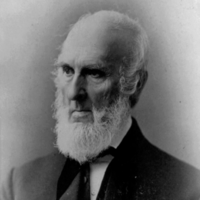
John Greenleaf Whittier (December 17, 1807 – September 7, 1892) was an American Quaker poet and advocate of the abolition of slavery in the United States. Frequently listed as one of the Fireside Poets, he was influenced by the Scottish poet Robert Burns. Whittier is remembered particularly for his anti-slavery writings as well as his book Snow-Bound. Early life and work John Greenleaf Whittier was born to John and Abigail (Hussey) at their rural homestead in Haverhill, Massachusetts, on December 17, 1807. His middle name is thought to mean 'feuillevert' after his Huguenot forbears. He grew up on the farm in a household with his parents, a brother and two sisters, a maternal aunt and paternal uncle, and a constant flow of visitors and hired hands for the farm. As a boy, it was discovered that Whittier was color-blind when he was unable to see a difference between ripe and unripe strawberries. Their farm was not very profitable and there was only enough money to get by. Whittier himself was not cut out for hard farm labor and suffered from bad health and physical frailty his whole life. Although he received little formal education, he was an avid reader who studied his father's six books on Quakerism until their teachings became the foundation of his ideology. Whittier was heavily influenced by the doctrines of his religion, particularly its stress on humanitarianism, compassion, and social responsibility. Whittier was first introduced to poetry by a teacher. His sister sent his first poem, "The Exile's Departure", to the Newburyport Free Press without his permission and its editor, William Lloyd Garrison, published it on June 8, 1826. Garrison as well as another local editor encouraged Whittier to attend the recently opened Haverhill Academy. To raise money to attend the school, Whittier became a shoemaker for a time, and a deal was made to pay part of his tuition with food from the family farm. Before his second term, he earned money to cover tuition by serving as a teacher in a one-room schoolhouse in what is now Merrimac, Massachusetts. He attended Haverhill Academy from 1827 to 1828 and completed a high school education in only two terms. Garrison gave Whittier the job of editor of the National Philanthropist, a Boston-based temperance weekly. Shortly after a change in management, Garrison reassigned him as editor of the weekly American Manufacturer in Boston. Whittier became an out-spoken critic of President Andrew Jackson, and by 1830 was editor of the prominent New England Weekly Review in Hartford, Connecticut, the most influential Whig journal in New England. In 1833 he published The Song of the Vermonters, 1779, which he had anonymously inserted in The New England Magazine. The poem was erroneously attributed to Ethan Allen for nearly sixty years. Abolitionist activity During the 1830s, Whittier became interested in politics but, after losing a Congressional election at age twenty-five, he suffered a nervous breakdown and returned home. The year 1833 was a turning point for Whittier; he resurrected his correspondence with Garrison, and the passionate abolitionist began to encourage the young Quaker to join his cause. In 1833, Whittier published the antislavery pamphlet Justice and Expediency, and from there dedicated the next twenty years of his life to the abolitionist cause. The controversial pamphlet destroyed all of his political hopes — as his demand for immediate emancipation alienated both northern businessmen and southern slaveholders — but it also sealed his commitment to a cause that he deemed morally correct and socially necessary. He was a founding member of the American Anti-Slavery Society and signed the Anti-Slavery Declaration of 1833, which he often considered the most significant action of his life. Whittier's political skill made him useful as a lobbyist, and his willingness to badger anti-slavery congressional leaders into joining the abolitionist cause was invaluable. From 1835 to 1838, he traveled widely in the North, attending conventions, securing votes, speaking to the public, and lobbying politicians. As he did so, Whittier received his fair share of violent responses, being several times mobbed, stoned, and run out of town. From 1838 to 1840, he was editor of The Pennsylvania Freeman in Philadelphia, one of the leading antislavery papers in the North, formerly known as the National Enquirer. In May 1838, the publication moved its offices to the newly opened Pennsylvania Hall on North Sixth Street, which was shortly after burned by a pro-slavery mob. Whittier also continued to write poetry and nearly all of his poems in this period dealt with the problem of slavery. By the end of the 1830s, the unity of the abolitionist movement had begun to fracture. Whittier stuck to his belief that moral action apart from political effort was futile. He knew that success required legislative change, not merely moral suasion. This opinion alone engendered a bitter split from Garrison,[citation needed] and Whittier went on to become a founding member of the Liberty Party in 1839. In 1840 he attended the World Anti-Slavery Convention in London. By 1843, he was announcing the triumph of the fledgling party: "Liberty party is no longer an experiment. It is vigorous reality, exerting... a powerful influence". Whittier also unsuccessfully encouraged Ralph Waldo Emerson and Henry Wadsworth Longfellow to join the party. He took editing jobs with the Middlesex Standard in Lowell, Massachusetts and the Essex Transcript in Amesbury until 1844. While in Lowell, he met Lucy Larcom, who became a lifelong friend. In 1845, he began writing his essay "The Black Man" which included an anecdote about John Fountain, a free black who was jailed in Virginia for helping slaves escape. After his release, Fountain went on a speaking tour and thanked Whittier for writing his story. Around this time, the stresses of editorial duties, worsening health, and dangerous mob violence caused him to have a physical breakdown. Whittier went home to Amesbury, and remained there for the rest of his life, ending his active participation in abolition. Even so, he continued to believe that the best way to gain abolitionist support was to broaden the Liberty Party's political appeal, and Whittier persisted in advocating the addition of other issues to their platform. He eventually participated in the evolution of the Liberty Party into the Free Soil Party, and some say his greatest political feat was convincing Charles Sumner to run on the Free-Soil ticket for the U.S. Senate in 1850. Beginning in 1847, Whittier was editor of Gamaliel Bailey's The National Era, one of the most influential abolitionist newspapers in the North. For the next ten years it featured the best of his writing, both as prose and poetry. Being confined to his home and away from the action offered Whittier a chance to write better abolitionist poetry; he was even poet laureate for his party. Whittier's poems often used slavery to represent all kinds of oppression (physical, spiritual, economic), and his poems stirred up popular response because they appealed to feelings rather than logic. Whittier produced two collections of antislavery poetry: Poems Written during the Progress of the Abolition Question in the United States, between 1830 and 1838 and Voices of Freedom (1846). He was an elector in the presidential election of 1860 and of 1864, voting for Abraham Lincoln both times. The passage of the Thirteenth Amendment in 1865 ended both slavery and his public cause, so Whittier turned to other forms of poetry for the remainder of his life. Criticism Nathaniel Hawthorne dismissed Whittier's Literary Recreations and Miscellanies (1854): "Whittier's book is poor stuff! I like the man, but have no high opinion either of his poetry or his prose." Editor George Ripley, however, found Whittier's poetry refreshing and said it had a "stately movement of versification, grandeur of imagery, a vein of tender and solemn pathos, cheerful trust" and a "pure and ennobling character". Boston critic Edwin Percy Whipple noted Whittier's moral and ethical tone mingled with sincere emotion. He wrote, "In reading this last volume, I feel as if my soul had taken a bath in holy water." Later scholars and critics questioned the depth of Whittier's poetry. One was Karl Keller, who noted, "Whittier has been a writer to love, not to belabor." Influence and legacy Whittier was particularly supportive of women writers, including Alice Cary, Phoebe Cary, Sarah Orne Jewett, Lucy Larcom, and Celia Thaxter. He was especially influential in prose writings by Jewett, with whom he shared a belief in the moral quality of literature and an interest New England folklore. Jewett dedicated one of her books to him and modeled several of her characters after people in Whittier's life. Whittier's family farm, known as the John Greenleaf Whittier Homestead or simply "Whittier's Birthplace", is now a historic site open to the public. His later residence in Amesbury, where he lived for 56 years, is also open to the public, and is now known as the John Greenleaf Whittier Home. Whittier's hometown of Haverhill has named many buildings and landmarks in his honor including J.G. Whittier Middle School, Greenleaf Elementary, and Whittier Regional Vocational Technical High School. Numerous other schools around the country also bear his name. A bridge named for Whittier, built in the style of the Sagamore and Bourne Bridges, carries Interstate 95 from Amesbury to Newburyport over the Merrimack River. A covered bridge spanning the Bearcamp River in Ossipee, New Hampshire is also named for Whittier, as is a nearby mountain. The city of Whittier, California is named after the poet, as are the communities of Whittier, Alaska, and Whittier, Iowa, the Minneapolis neighborhood of Whittier, the Denver, Colorado, neighborhood of Whittier, and the town of Greenleaf, Idaho. Both Whittier College and Whittier Law School are also named after him. A park in the Saint Boniface area of Winnipeg is named after the poet in recognition of his poem "The Red River Voyageur". Whittier Education Campus in Washington, DC is named in his honor. The alternate history story P.'s Correspondence (1846) by Nathaniel Hawthorne, considered the first such story ever published in English, includes the notice "Whittier, a fiery Quaker youth, to whom the muse had perversely assigned a battle-trumpet, got himself lynched, in South Carolina". The date of that event in Hawthorne's invented timeline was 1835. Whittier was one of thirteen writers in the 1897 card game Authors and referenced his writings "Laus Deo", "Among the Hills", Snow-bound, and "The Eternal Goodness". He was removed from the card game when it was reissued in 1987. LIST OF WORKS Poetry collections Poems written during the Progress of the Abolition Question in the United States (1837) Lays of My Home (1843) Voices of Freedom (1846) Songs of Labor (1850) The Chapel of the Hermits (1853) Le Marais du Cygne (September 1858 Atlantic Monthly) Home Ballads (1860) The Furnace Blast (1862) Maud Muller (1856) In War Time (1864) Snow-Bound (1866) The Tent on the Beach (1867) Among the Hills (1869) Whittier's Poems Complete (1874)[citation needed] *The Pennsylvania Pilgrim (1872) The Vision of Echard (1878) The King's Missive (1881) Saint Gregory's Guest (1886) At Sundown (1890) Prose The Stranger in Lowell (1845) The Supernaturalism of New England (1847) Leaves from Margaret Smith's Journal (1849) Old Portraits and Modern Sketches (1850) Literary Recreations and Miscellanies (1854) References Wikipedia—https://en.wikipedia.org/wiki/John_Greenleaf_Whittier
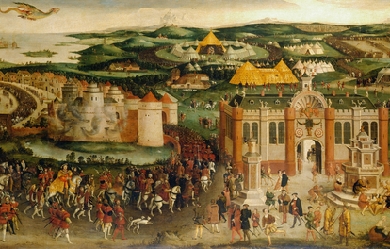
Edmund Spenser (c. 1552 – 13 January 1599) was an English poet best known for The Faerie Queene, an epic poem and fantastical allegory celebrating the Tudor dynasty and Elizabeth I. He is recognised as one of the premier craftsmen of Modern English verse in its infancy, and is considered one of the greatest poets in the English language. Edmund Spenser was born in East Smithfield, London, around the year 1552, though there is some ambiguity as to the exact date of his birth. As a young boy, he was educated in London at the Merchant Taylors' School and matriculated as a sizar at Pembroke College, Cambridge. While at Cambridge he became a friend of Gabriel Harvey and later consulted him, despite their differing views on poetry. In 1578 he became for a short time secretary to John Young, Bishop of Rochester. In 1579 he published The Shepheardes Calender and around the same time married his first wife, Machabyas Childe. In July 1580 Spenser went to Ireland in service of the newly appointed Lord Deputy, Arthur Grey, 14th Baron Grey de Wilton. When Grey was recalled to England, he stayed on in Ireland, having acquired other official posts and lands in the Munster Plantation. At some time between 1587 and 1589 he acquired his main estate at Kilcolman, near Doneraile in North Cork. Among his acquaintances in the area was Walter Raleigh, a fellow colonist. He later bought a second holding to the south, at Rennie, on a rock overlooking the river Blackwater in North Cork. Its ruins are still visible today. A short distance away grew a tree, locally known as "Spenser's Oak" until it was destroyed in a lightning strike in the 1960s. Local legend has it that he penned some of The Faerie Queene under this tree. In 1590 Spenser brought out the first three books of his most famous work, The Faerie Queene, having travelled to London to publish and promote the work, with the likely assistance of Raleigh. He was successful enough to obtain a life pension of £50 a year from the Queen. He probably hoped to secure a place at court through his poetry, but his next significant publication boldly antagonised the queen's principal secretary, Lord Burghley, through its inclusion of the satirical Mother Hubberd's Tale. He returned to Ireland. By 1594 Spenser's first wife had died, and in that year he married Elizabeth Boyle, to whom he addressed the sonnet sequence Amoretti. The marriage itself was celebrated in Epithalamion. In 1596 Spenser wrote a prose pamphlet titled, A View of the Present State of Ireland. This piece, in the form of a dialogue, circulated in manuscript, remaining unpublished until the mid-seventeenth century. It is probable that it was kept out of print during the author's lifetime because of its inflammatory content. The pamphlet argued that Ireland would never be totally 'pacified' by the English until its indigenous language and customs had been destroyed, if necessary by violence. Later on, during the Nine Years War in 1598, Spenser was driven from his home by the native Irish forces of Aodh Ó Néill. His castle at Kilcolman was burned, and Ben Jonson (who may have had private information) asserted that one of his infant children died in the blaze. In the year after being driven from his home, Spenser travelled to London, where he died aged forty-six. His coffin was carried to his grave in Westminster Abbey by other poets, who threw many pens and pieces of poetry into his grave with many tears. His second wife survived him and remarried twice. Rhyme and reason Thomas Fuller included in his Worthies of England a story that The Queen told her treasurer, William Cecil, to pay Spenser one hundred pounds for his poetry. The treasurer, however, objected that the sum was too much. She said, "Then give him what is reason". After a long while without receiving his payment, Spenser gave the Queen this quatrain on one of her progresses: I was promis'd on a time, To have a reason for my rhyme: From that time unto this season, I receiv'd nor rhyme nor reason. She immediately ordered the treasurer pay Spenser the original £100. This story seems to have attached itself to Spenser from Thomas Churchyard, who apparently had difficulty in getting payment of his pension (the only other one Elizabeth awarded to a poet). Spenser seems to have had no difficulty in receiving payment when it was due, the pension being collected for him by his publisher, Ponsonby. The Faerie Queene Spenser's masterpiece is the epic poem The Faerie Queene. The first three books of The Faerie Queene were published in 1590, and a second set of three books were published in 1596. Spenser originally indicated that he intended the poem to consist of twelve books, so the version of the poem we have today is incomplete. Despite this, it remains one of the longest poems in the English language. It is an allegorical work, and can be read (as Spenser presumably intended) on several levels of allegory, including as praise of Queen Elizabeth I. In a completely allegorical context, the poem follows several knights in an examination of several virtues. In Spenser's "A Letter of the Authors," he states that the entire epic poem is "cloudily enwrapped in allegorical devises," and that the aim behind The Faerie Queene was to “fashion a gentleman or noble person in virtuous and gentle discipline.” Shorter poems Spenser published numerous relatively short poems in the last decade of the sixteenth century, almost all of which consider love or sorrow. In 1591 he published Complaints, a collection of poems that express complaints in mournful or mocking tones. Four years later, in 1595, Spenser published Amoretti and Epithalamion. This volume contains eighty-nine sonnets commemorating his courtship of Elizabeth Boyle. In “Amoretti,” Spenser uses subtle humour and parody while praising his beloved, reworking Petrarchism in his treatment of longing for a woman. “Epithalamion,” similar to “Amoretti,” deals in part with the unease in the development of a romantic and sexual relationship. It was written for his wedding to his young bride, Elizabeth Boyle. The poem consists of 365 long lines, corresponding to the days of the year; 68 short lines, claimed to represent the sum of the 52 weeks, 12 months, and 4 seasons of the annual cycle; and 24 stanzas, corresponding to the diurnal and sidereal hours.[citation needed] Some have speculated that the attention to disquiet in general reflects Spenser’s personal anxieties at the time, as he was unable to complete his most significant work, The Faerie Queene. In the following year Spenser released "Prothalamion," a wedding song written for the daughters of a duke, allegedly in hopes to gain favor in the court. The Spenserian stanza and sonnet Spenser used a distinctive verse form, called the Spenserian stanza, in several works, including The Faerie Queene. The stanza's main meter is iambic pentameter with a final line in iambic hexameter (having six feet or stresses, known as an Alexandrine), and the rhyme scheme is ababbcbcc. He also used his own rhyme scheme for the sonnet. Influences and influenced Though Spenser was well read in classical literature, scholars have noted that his poetry does not rehash tradition, but rather is distinctly his. This individuality may have resulted, to some extent, from a lack of comprehension of the classics. Spenser strove to emulate such ancient Roman poets as Virgil and Ovid, whom he studied during his schooling, but many of his best-known works are notably divergent from those of his predecessors.[15] The language of his poetry is purposely archaic, reminiscent of earlier works such as The Canterbury Tales of Geoffrey Chaucer and Il Canzoniere of Francesco Petrarca, whom Spenser greatly admired. Spenser was called a Poets' Poet and was admired by William Wordsworth, John Keats, Lord Byron, and Alfred Lord Tennyson, among others. Walter Raleigh wrote a dedicatory sonnet to The Faerie Queene in 1590, in which he claims to admire and value Spenser’s work more so than any other in the English language. In the eighteenth century, Alexander Pope compared Spenser to “a mistress, whose faults we see, but love her with them all." A View of the Present State of Ireland n his work A View of the present State of Ireland, Spenser devises his ideas to the issues of the nation of Ireland. These views are suspected to not be his own but based on the work of his predecessor, Lord Arthur Grey de Wilton who was appointed Lord Deputy of Ireland in 1580 (Henley 19, 168-69). Lord Grey was a major figure in Ireland at the time and Spenser was influenced greatly by his ideals and his work in the country, as well as that of his fellow countrymen also living in Ireland at the time (Henley 169). The goal of this piece was to show that Ireland was in great need of reform. Spenser believed that “Ireland is a diseased portion of the State, it must first be cured and reformed, before it could be in a position to appreciate the good sound laws and blessings of the nation” (Henley 178). In A View of the present State of Ireland, Spenser categorizes the “evils” of the Irish people into three prominent categories: laws, customs, and religion (Spenser). These three elements work together in creating the disruptive and degraded people. One example given in the work is the native law system called “Brehon Law” which trumps the established law given by the English monarchy (Spenser). This system has its own court and way of dealing with infractions. It has been passed down through the generations and Spenser views this system as a native backward custom which must be destroyed. Spenser also recommended scorched earth tactics, such as he had seen used in the Desmond Rebellions, to create famine. Although it has been highly regarded as a polemical piece of prose and valued as a historical source on 16th century Ireland, the View is seen today as genocidal in intent. Spenser did express some praise for the Gaelic poetic tradition, but also used much tendentious and bogus analysis to demonstrate that the Irish were descended from barbarian Scythian stock. References Wikipedia - http://en.wikipedia.org/wiki/Edmund_Spenser
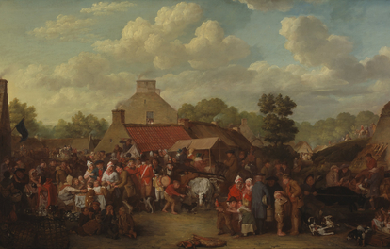
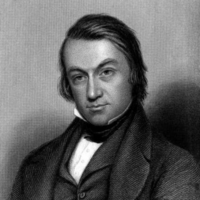
Charles Mackay (27 March 1814– 24 December 1889) was a Scottish poet, journalist, author, anthologist, novelist, and songwriter, remembered mainly for his book Extraordinary Popular Delusions and the Madness of Crowds. He was born in Perth. His father, George Mackay, was a bombardier in the Royal Artillery, and his mother Amelia Cargill died shortly after his birth. His birthdate was 26 March 1812, although he always gave it as 27 March 1814.

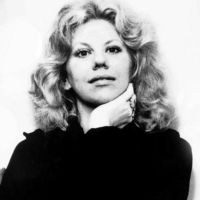
Erica Jong (née Mann; born March 26, 1942) is an American novelist and poet, known particularly for her 1973 novel Fear of Flying. The book became famously controversial for its attitudes towards female sexuality and figured prominently in the development of second-wave feminism. According to Washington Post, it has sold more than 20 million copies worldwide. Born in New York, she was the second of three daughters of Seymore Mann and Eda Mirsky. Attended New York’s Public High School of Music and Art in the 1950’s where she developed her passion for art and writing. As a student at Barnard College, she edited the Barnard Literary Magazine and created poetry programs for the Columbia University campus radio station.

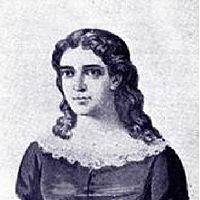
Dolores Veintimilla de Galindo (Quito, 12 de julio de 1829 - Cuenca, 23 de mayo de 1857) fue una poeta ecuatoriana del siglo XIX. Durante su corta vida fue la creadora de poemas de corte romántico que están cargados de elementos que asocian a la mujer con el papel de víctima asociados con sentimientos de dolor, tristeza, anhelo del pasado, amores frustrado y pesimismo. Fue influenciada por la formación de la subjetividad femenina de su época. Su poema “Quejas” está lleno de esos sentimientos que reflejan su estado anímico. El fracaso en su matrimonio con el médico colombiano Sixto Galindo, así como su pensamiento feminista adelantado a la época, marcarían la personalidad y los trabajos posteriores de Dolores. La persecución e incomprensión de la sociedad cuencana la llevó al suicidio.
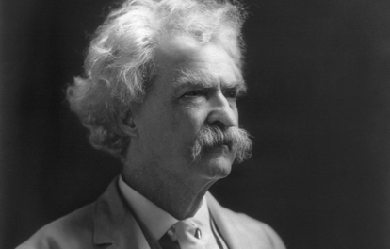

Samuel Langhorne Clemens (November 30, 1835– April 21, 1910), better known by his pen name Mark Twain, was an American writer, humorist, entrepreneur, publisher, and lecturer. Among his novels are The Adventures of Tom Sawyer (1876) and its sequel, the Adventures of Huckleberry Finn (1885), the latter often called “The Great American Novel”.
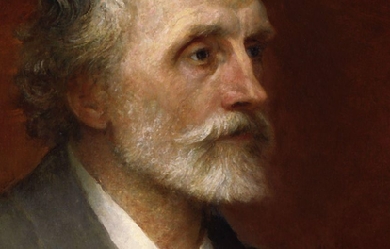
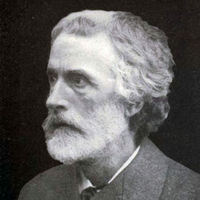
George Meredith, OM (12 February 1828 – 18 May 1909) was an English novelist and poet of the Victorian era. Meredith was born in Portsmouth, England, a son and grandson of naval outfitters. His mother died when he was five. At the age of 14 he was sent to a Moravian School in Neuwied, Germany, where he remained for two years. He read law and was articled as a solicitor, but abandoned that profession for journalism and poetry. He collaborated with Edward Gryffydh Peacock, son of Thomas Love Peacock in publishing a privately circulated literary magazine, the Monthly Observer. He married Edward Peacock's widowed sister Mary Ellen Nicolls in 1849 when he was twenty-one years old and she was twenty-eight. He collected his early writings, first published in periodicals, into Poems, published to some acclaim in 1851. His wife ran off with the English Pre-Raphaelite painter Henry Wallis [1830–1916] in 1858; she died three years later. The collection of "sonnets" entitled Modern Love (1862) came of this experience as did The Ordeal of Richard Feverel, his first "major novel". He married Marie Vulliamy in 1864 and settled in Surrey. He continued writing novels and poetry, often inspired by nature. His writing was characterised by a fascination with imagery and indirect references. He had a keen understanding of comedy and his Essay on Comedy (1877) is still quoted in most discussions of the history of comic theory. In The Egoist, published in 1879, he applies some of his theories of comedy in one of his most enduring novels. Some of his writings, including The Egoist, also highlight the subjugation of women during the Victorian period. During most of his career, he had difficulty achieving popular success. His first truly successful novel was Diana of the Crossways published in 1885. Meredith supplemented his often uncertain writer's income with a job as a publisher's reader. His advice to Chapman and Hall made him influential in the world of letters. His friends in the literary world included, at different times, William and Dante Gabriel Rossetti, Algernon Charles Swinburne, Leslie Stephen, Robert Louis Stevenson, George Gissing and J. M. Barrie. His contemporary Sir Arthur Conan Doyle paid him homage in the short-story The Boscombe Valley Mystery, when Sherlock Holmes says to Dr. Watson during the discussion of the case, "And now let us talk about George Meredith, if you please, and we shall leave all minor matters until to-morrow." Oscar Wilde, in his dialogue The Decay of Lying, implies that Meredith, along with Balzac, is his favourite novelist, saying "Ah, Meredith! Who can define him? His style is chaos illumined by flashes of lightning". In 1868 he was introduced to Thomas Hardy by Frederick Chapman of Chapman & Hall the publishers. Hardy had submitted his first novel, The Poor Man and the Lady. Meredith advised Hardy not to publish his book as it would be attacked by reviewers and destroy his hopes of becoming a novelist. Meredith felt the book was too bitter a satire on the rich and counselled Hardy to put it aside and write another 'with a purely artistic purpose' and more of a plot. Meredith spoke from experience; his first big novel, The Ordeal of Richard Feverel, was judged so shocking that Mudie's circulating library had cancelled an order of 300 copies. Hardy continued to try and publish the novel: however it remained unpublished, though he clearly took Meredith's advice seriously. Before his death, Meredith was honoured from many quarters: he succeeded Lord Tennyson as president of the Society of Authors; in 1905 he was appointed to the Order of Merit by King Edward VII. In 1909, he died at his home in Box Hill, Surrey. Works Essays * Essay on Comedy (1877) Novels * The Shaving of Shagpat (1856) * Farina (1857) * The Ordeal of Richard Feverel (1859) * Evan Harrington (1861) * Emilia in England (1864), republished as Sandra Belloni in 1887 * Rhoda Fleming (1865) * Vittoria (1867) * The Adventures of Harry Richmond (1871) * Beauchamp's Career (1875) * The House on the Beach (1877) * The Case of General Ople and Lady Camper (1877) * The Tale of Chloe (1879) * The Egoist (1879) * The Tragic Comedians (1880) * Diana of the Crossways (1885) * One of our Conquerors (1891) * Lord Ormont and his Aminta (1894) * The Amazing Marriage (1895) * Celt and Saxon (1910) Poetry * Poems (1851) * Modern Love (1862) * Poems and Lyrics of the Joy of Earth (1883) * The Woods of Westermain (1883) * A Faith on Trial (1885) * Ballads and Poems of Tragic Life (1887) * A Reading of Earth (1888) * The Empty Purse (1892) * Odes in Contribution to the Song of French History(1898) * A Reading of Life (1901) * Last Poems (1909) * Lucifer in Starlight * The Lark Ascending (the inspiration for Vaughan Williams' instrumental work The Lark Ascending). References Wikipedia - http://en.wikipedia.org/wiki/George_Meredith
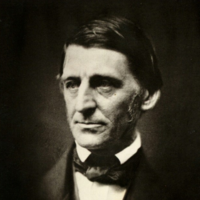
Ralph Waldo Emerson (May 25, 1803 – April 27, 1882) was an American essayist, lecturer, and poet, who led the Transcendentalist movement of the mid-19th century. He was seen as a champion of individualism and a prescient critic of the countervailing pressures of society, and he disseminated his thoughts through dozens of published essays and more than 1, public lectures across the United States. Emerson gradually moved away from the religious and social beliefs of his contemporaries, formulating and expressing the philosophy of Transcendentalism in his 1836 essay, Nature. Following this ground-breaking work, he gave a speech entitled The American Scholar in 1837, which Oliver Wendell Holmes, Sr. considered to be America's "Intellectual Declaration of Independence". Emerson wrote most of his important essays as lectures first, then revised them for print. His first two collections of essays – Essays: First Series and Essays: Second Series, published respectively in 1841 and 1844 – represent the core of his thinking, and include such well-known essays as Self-Reliance, The Over-Soul, Circles, The Poet and Experience. Together with Nature, these essays made the decade from the mid-1830s to the mid-1840s Emerson's most fertile period. Emerson wrote on a number of subjects, never espousing fixed philosophical tenets, but developing certain ideas such as individuality, freedom, the ability for humankind to realize almost anything, and the relationship between the soul and the surrounding world. Emerson's "nature" was more philosophical than naturalistic; "Philosophically considered, the universe is composed of Nature and the Soul." While his writing style can be seen as somewhat impenetrable, and was thought so even in his own time, Emerson's essays remain among the linchpins of American thinking, and Emerson's work has greatly influenced the thinkers, writers and poets that have followed him. When asked to sum up his work, he said his central doctrine was "the infinitude of the private man.” Early life, family, and education Emerson was born in Boston, Massachusetts on May 25, 1803, son of Ruth Haskins and the Rev. William Emerson, a Unitarian minister. He was named after his mother's brother Ralph and the father's great-grandmother Rebecca Waldo. Ralph Waldo was the second of five sons who survived into adulthood; the others were William, Edward, Robert Bulkeley, and Charles. Three other children—Phebe, John Clarke, and Mary Caroline–died in childhood. The young Ralph Waldo Emerson's father died from stomach cancer on May 12, 1811, less than two weeks before Emerson's eighth birthday. Emerson was raised by his mother, with the help of the other women in the family; his aunt Mary Moody Emerson in particular had a profound effect on Emerson. She lived with the family off and on, and maintained a constant correspondence with Emerson until her death in 1863. Emerson's formal schooling began at the Boston Latin School in 1812 when he was nine. In October 1817, at 14, Emerson went to Harvard College and was appointed freshman messenger for the president, requiring Emerson to fetch delinquent students and send messages to faculty. Midway through his junior year, Emerson began keeping a list of books he had read and started a journal in a series of notebooks that would be called "Wide World". He took outside jobs to cover his school expenses, including as a waiter for the Junior Commons and as an occasional teacher working with his uncle Samuel in Waltham, Massachusetts. By his senior year, Emerson decided to go by his middle name, Waldo. Emerson served as Class Poet; as was custom, he presented an original poem on Harvard's Class Day, a month before his official graduation on August 29, 1821, when he was 18. He did not stand out as a student and graduated in the exact middle of his class of 59 people. In 1826, faced with poor health, Emerson went to seek out warmer climates. He first went to Charleston, South Carolina, but found the weather was still too cold. He then went further south, to St. Augustine, Florida, where he took long walks on the beach, and began writing poetry. While in St. Augustine, he made the acquaintance of Prince Achille Murat. Murat, the nephew of Napoleon Bonaparte, was only two years his senior; they became extremely good friends and enjoyed one another's company. The two engaged in enlightening discussions on religion, society, philosophy, and government, and Emerson considered Murat an important figure in his intellectual education. While in St. Augustine, Emerson had his first experience of slavery. At one point, he attended a meeting of the Bible Society while there was a slave auction taking place in the yard outside. He wrote, "One ear therefore heard the glad tidings of great joy, whilst the other was regaled with 'Going, gentlemen, going’!” Early career After Harvard, Emerson assisted his brother William in a school for young women established in their mother's house, after he had established his own school in Chelmsford, Massachusetts; when his brother William went to Göttingen to study divinity, Emerson took charge of the school. Over the next several years, Emerson made his living as a schoolmaster, then went to Harvard Divinity School. Emerson's brother Edward, two years younger than he, entered the office of lawyer Daniel Webster, after graduating Harvard first in his class. Edward's physical health began to deteriorate and he soon suffered a mental collapse as well; he was taken to McLean Asylum in June 1828 at age 23. Although he recovered his mental equilibrium, he died in 1834 from apparently longstanding tuberculosis. Another of Emerson's bright and promising younger brothers, Charles, born in 1808, died in 1836, also of tuberculosis, making him the third young person in Emerson's innermost circle to die in a period of a few years. Emerson met his first wife, Ellen Louisa Tucker, in Concord, New Hampshire on Christmas Day, 1827, and married her when she was 18. The couple moved to Boston, with Emerson's mother Ruth moving with them to help take care of Ellen, who was already sick with tuberculosis. Less than two years later, Ellen died at the age of 20 on February 8, 1831, after uttering her last words: "I have not forgot the peace and joy." Emerson was heavily affected by her death and visited her grave in Roxbury daily. In a journal entry dated March 29, 1832, Emerson wrote, "I visited Ellen's tomb & opened the coffin." Boston's Second Church invited Emerson to serve as its junior pastor and he was ordained on January 11, 1829. His initial salary was $1, a year, increasing to $1, in July, but with his church role he took on other responsibilities: he was chaplain to the Massachusetts legislature, and a member of the Boston school committee. His church activities kept him busy, though during this period, facing the imminent death of his wife, he began to doubt his own beliefs. After his wife's death, he began to disagree with the church's methods, writing in his journal in June 1832: "I have sometimes thought that, in order to be a good minister, it was necessary to leave the ministry. The profession is antiquated. In an altered age, we worship in the dead forms of our forefathers." His disagreements with church officials over the administration of the Communion service and misgivings about public prayer eventually led to his resignation in 1832. As he wrote, "This mode of commemorating Christ is not suitable to me. That is reason enough why I should abandon it." As one Emerson scholar has pointed out, "Doffing the decent black of the pastor, he was free to choose the gown of the lecturer and teacher, of the thinker not confined within the limits of an institution or a tradition." Emerson toured Europe in 1833 and later wrote of his travels in English Traits (1857). He left aboard the brig Jasper on Christmas Day, 1832, sailing first to Malta. During his European trip, he spent several months in Italy, visiting Rome, Florence and Venice, among other cities. When in Rome, he met with John Stuart Mill, who gave him a letter of recommendation to meet Thomas Carlyle. He went to Switzerland, and had to be dragged by fellow passengers to visit Voltaire's home in Ferney, "protesting all the way upon the unworthiness of his memory." He then went on to Paris, a "loud modern New York of a place,", where he visited the Jardin des Plantes. He was greatly moved by the organization of plants according to Jussieu's system of classification, and the way all such objects were related and connected. As Richardson says, "Emerson's moment of insight into the interconnectedness of things in the Jardin des Plantes was a moment of almost visionary intensity that pointed him away from theology and toward science." Moving north to England, Emerson met William Wordsworth, Samuel Taylor Coleridge, and Thomas Carlyle. Carlyle in particular was a strong influence on Emerson; Emerson would later serve as an unofficial literary agent in the United States for Carlyle, and in March 1835, he tried to convince Carlyle to come to America to lecture. The two would maintain correspondence until Carlyle's death in 1881. Emerson returned to the United States on October 9, 1833, and lived with his mother in Newton, Massachusetts, until October, 1834, when he moved to Concord, Massachusetts, to live with his step-grandfather Dr. Ezra Ripley at what was later named The Old Manse. Seeing the budding Lyceum movement, which provided lectures on all sorts of topics, Emerson saw a possible career as a lecturer. On November 5, 1833, he made the first of what would eventually be some 1, lectures, discussing The Uses of Natural History in Boston. This was an expanded account of his experience in Paris. In this lecture, he set out some of his important beliefs and the ideas he would later develop in his first published essay Nature: Nature is a language and every new fact one learns is a new word; but it is not a language taken to pieces and dead in the dictionary, but the language put together into a most significant and universal sense. I wish to learn this language, not that I may know a new grammar, but that I may read the great book that is written in that tongue. On January 24, 1835, Emerson wrote a letter to Lydia Jackson proposing marriage. Her acceptance reached him by mail on the 28th. In July 1835, he bought a house on the Cambridge and Concord Turnpike in Concord, Massachusetts which he named "Bush"; it is now open to the public as the Ralph Waldo Emerson House. Emerson quickly became one of the leading citizens in the town. He gave a lecture to commemorate the 200th anniversary of the town of Concord on September 12, 1835. Two days later, he married Lydia Jackson in her home town of Plymouth, Massachusetts, and moved to the new home in Concord together with Emerson's mother on September 15. Emerson quickly changed his wife's name to Lidian, and would call her Queenie, and sometimes Asia, and she called him Mr. Emerson. Their children were Waldo, Ellen, Edith, and Edward Waldo Emerson. Ellen was named for his first wife, at Lidian's suggestion. Emerson was poor when he was at Harvard, and later supported his family for much of his life. He inherited a fair amount of money after his first wife's death, though he had to file a lawsuit against the Tucker family in 1836 to get it. He received $11, in May 1834, and a further $11,. in July 1837. In 1834, he considered that he had an income of $1, a year from the initial payment of the estate, equivalent to what he had earned as a pastor. Literary career and Transcendentalism On September 8, 1836, the day before the publication of Nature, Emerson met with Henry Hedge, George Putnam and George Ripley to plan periodic gatherings of other like-minded intellectuals. This was the beginning of the Transcendental Club, which served as a center for the movement. Its first official meeting was held on September 19, 1836. On September 1, 1837, women attended a meeting of the Transcendental Club for the first time. Emerson invited Margaret Fuller, Elizabeth Hoar and Sarah Ripley for dinner at his home before the meeting to ensure that they would be present for the evening get-together. Fuller would prove to be an important figure in Transcendentalism. Emerson anonymously published his first essay, Nature, on September 9, 1836. A year later, on August 31, 1837, Emerson delivered his now-famous Phi Beta Kappa address, "The American Scholar", then known as "An Oration, Delivered before the Phi Beta Kappa Society at Cambridge"; it was renamed for a collection of essays (which included the first general publication of "Nature") in 1849. Friends urged him to publish the talk, and he did so, at his own expense, in an edition of 500 copies, which sold out in a month. In the speech, Emerson declared literary independence in the United States and urged Americans to create a writing style all their own and free from Europe. James Russell Lowell, who was a student at Harvard at the time, called it "an event without former parallel on our literary annals". Another member of the audience, Reverend John Pierce, called it "an apparently incoherent and unintelligible address". In 1837, Emerson befriended Henry David Thoreau. Though they had likely met as early as 1835, in the fall of 1837, Emerson asked Thoreau, "Do you keep a journal?" The question went on to have a lifelong inspiration for Thoreau. Emerson's own journal comes to 16 large volumes, in the definitive Harvard University Press edition published between 1960 and 1982. Some scholars consider the journal to be Emerson's key literary work. In March 1837, Emerson gave a series of lectures on The Philosophy of History at Boston's Masonic Temple. This was the first time he managed a lecture series on his own, and was the beginning of his serious career as a lecturer. The profits from this series of lectures were much larger than when he was paid by an organization to talk, and Emerson continued to manage his own lectures often throughout his lifetime. He would eventually give as many as 80 lectures a year, traveling across the northern part of the United States. He traveled as far as St. Louis, Des Moines, Minneapolis, and California. On July 15, 1838, Emerson was invited to Divinity Hall, Harvard Divinity School for the school's graduation address, which came to be known as his "Divinity School Address". Emerson discounted Biblical miracles and proclaimed that, while Jesus was a great man, he was not God: historical Christianity, he said, had turned Jesus into a "demigod, as the Orientals or the Greeks would describe Osiris or Apollo". His comments outraged the establishment and the general Protestant community. For this, he was denounced as an atheist, and a poisoner of young men's minds. Despite the roar of critics, he made no reply, leaving others to put forward a defense. He was not invited back to speak at Harvard for another thirty years. The Transcendental group began to publish its flagship journal, The Dial, in July 1840. They planned the journal as early as October 1839, but work did not begin until the first week of 1840. George Ripley was its managing editor and Margaret Fuller was its first editor, having been hand-chosen by Emerson after several others had declined the role. Fuller stayed on for about two years and Emerson took over, utilizing the journal to promote talented young writers including Ellery Channing and Thoreau. It was in 1841 that Emerson published Essays, his second book, which included the famous essay, "Self-Reliance". His aunt called it a "strange medley of atheism and false independence", but it gained favorable reviews in London and Paris. This book, and its popular reception, more than any of Emerson's contributions to date laid the groundwork for his international fame. In January 1842 Emerson's first son Waldo died from scarlet fever. Emerson wrote of his grief in the poem "Threnody" ("For this losing is true dying"), and the essay "Experience". That same month, William James was born, and Emerson agreed to be his godfather. Bronson Alcott announced his plans in November 1842 to find "a farm of a hundred acres in excellent condition with good buildings, a good orchard and grounds". Charles Lane purchased a 90-acre (360, m2) farm in Harvard, Massachusetts, in May 1843 for what would become Fruitlands, a community based on Utopian ideals inspired in part by Transcendentalism. The farm would run based on a communal effort, using no animals for labor; its participants would eat no meat and use no wool or leather. Emerson said he felt "sad at heart" for not engaging in the experiment himself. Even so, he did not feel Fruitlands would be a success. "Their whole doctrine is spiritual", he wrote, "but they always end with saying, Give us much land and money". Even Alcott admitted he was not prepared for the difficulty in operating Fruitlands. "None of us were prepared to actualize practically the ideal life of which we dreamed. So we fell apart", he wrote. After its failure, Emerson helped buy a farm for Alcott's family in Concord which Alcott named "Hillside". The Dial ceased publication in April 1844; Horace Greeley reported it as an end to the "most original and thoughtful periodical ever published in this country". (An unrelated magazine of the same name would be published in several periods through 1929.) In 1844, Emerson published his second collection of essays, entitled "Essays: Second Series." This collection included "The Poet," "Experience," "Gifts," and an essay entitled "Nature," a different work from the 1836 essay of the same name. Emerson made a living as a popular lecturer in New England and much of the rest of the country. He had begun lecturing in 1833; by the 1850s he was giving as many as 80 per year. He addressed the Boston Society for the Diffusion of Useful Knowledge and the Gloucester Lyceum, among others. Emerson spoke on a wide variety of subjects and many of his essays grew out of his lectures. He charged between $10 and $50 for each appearance, bringing him as much as $2, in a typical winter "season". This was more than his earnings from other sources. In some years, he earned as much as $900 for a series of six lectures, and in another, for a winter series of talks in Boston, he netted $1,. He eventually gave some 1, lectures in his lifetime. His earnings allowed him to expand his property, buying 11 acres (45, m2) of land by Walden Pond and a few more acres in a neighboring pine grove. He wrote that he was "landlord and waterlord of 14 acres, more or less". Emerson was introduced to Indian philosophy when reading the works of French philosopher Victor Cousin. In 1845, Emerson's journals show he was reading the Bhagavad Gita and Henry Thomas Colebrooke's Essays on the Vedas. Emerson was strongly influenced by the Vedas, and much of his writing has strong shades of nondualism. One of the clearest examples of this can be found in his essay "The Over-soul”: We live in succession, in division, in parts, in particles. Meantime within man is the soul of the whole; the wise silence; the universal beauty, to which every part and particle is equally related, the eternal ONE. And this deep power in which we exist and whose beatitude is all accessible to us, is not only self-sufficing and perfect in every hour, but the act of seeing and the thing seen, the seer and the spectacle, the subject and the object, are one. We see the world piece by piece, as the sun, the moon, the animal, the tree; but the whole, of which these are shining parts, is the soul. From 1847 to 1848, he toured England, Scotland, and Ireland. He also visited Paris between the February Revolution and the bloody June Days. When he arrived, he saw the stumps where trees had been cut down to form barricades in the February riots. On May 21 he stood on the Champ de Mars in the midst of mass celebrations for concord, peace and labor. He wrote in his journal: "At the end of the year we shall take account, & see if the Revolution was worth the trees." In February 1852 Emerson and James Freeman Clarke and William Henry Channing edited an edition of the works and letters of Margaret Fuller, who had died in 1850. Within a week of her death, her New York editor Horace Greeley suggested to Emerson that a biography of Fuller, to be called Margaret and Her Friends, be prepared quickly "before the interest excited by her sad decease has passed away". Published with the title The Memoirs of Margaret Fuller Ossoli, Fuller's words were heavily censored or rewritten. The three editors were not concerned about accuracy; they believed public interest in Fuller was temporary and that she would not survive as a historical figure. Even so, for a time, it was the best-selling biography of the decade and went through thirteen editions before the end of the century. Walt Whitman published the innovative poetry collection Leaves of Grass in 1855 and sent a copy to Emerson for his opinion. Emerson responded positively, sending a flattering five-page letter as a response. Emerson's approval helped the first edition of Leaves of Grass stir up significant interest and convinced Whitman to issue a second edition shortly thereafter. This edition quoted a phrase from Emerson's letter, printed in gold leaf on the cover: "I Greet You at the Beginning of a Great Career". Emerson took offense that this letter was made public and later became more critical of the work. Civil War years Emerson was staunchly anti-slavery, but he did not appreciate being in the public limelight and was hesitant about lecturing on the subject. He did, however, give a number of lectures during the pre-Civil War years, beginning as early as November, 1837. A number of his friends and family members were more active abolitionists than he, at first, but from 1844 on, he took a more active role in opposing slavery. He gave a number of speeches and lectures, and notably welcomed John Brown to his home during Brown's visits to Concord. He voted for Abraham Lincoln in 1860, but Emerson was disappointed that Lincoln was more concerned about preserving the Union than eliminating slavery outright. Once the American Civil War broke out, Emerson made it clear that he believed in immediate emancipation of the slaves. Around this time, in 1860, Emerson published The Conduct of Life, his final original collection of essays. In this book, Emerson "grappled with some of the thorniest issues of the moment," and "his experience in the abolition ranks is a telling influence in his conclusions. In the book's opening essay, Fate, Emerson wrote, "The question of the times resolved itself into a practical question of the conduct of life. How shall I live?" Emerson visited Washington, D.C, at the end of January, 1862. He gave a public lecture at the Smithsonian on January 31, 1862, and declared: "The South calls slavery an institution... I call it destitution... Emancipation is the demand of civilization". The next day, February 1, his friend Charles Sumner took him to meet Lincoln at the White House. Lincoln was familiar with Emerson's work, having previously seen him lecture. Emerson's misgivings about Lincoln began to soften after this meeting. In 1865, he spoke at a memorial service held for Lincoln in Concord: "Old as history is, and manifold as are its tragedies, I doubt if any death has caused so much pain as this has caused, or will have caused, on its announcement." Emerson also met a number of high-ranking government officials, including Salmon P. Chase, the secretary of the treasury, Edward Bates, the attorney general, Edwin M. Stanton, the secretary of war, Gideon Welles, the secretary of the navy, and William Seward, the secretary of state. On May 6, 1862, Emerson's protégé Henry David Thoreau died of tuberculosis at the age of 44 and Emerson delivered his eulogy. Emerson would continuously refer to Thoreau as his best friend, despite a falling out that began in 1849 after Thoreau published A Week on the Concord and Merrimack Rivers. Another friend, Nathaniel Hawthorne, died two years after Thoreau in 1864. Emerson served as one of the pallbearers as Hawthorne was buried in Concord, as Emerson wrote, "in a pomp of sunshine and verdure". He was elected a Fellow of the American Academy of Arts and Sciences in 1864. Final years and death Starting in 1867, Emerson's health began declining; he wrote much less in his journals. Beginning as early as the summer of 1871 or in the spring of 1872, Emerson started having memory problems and suffered from aphasia. By the end of the decade, he forgot his own name at times and, when anyone asked how he felt, he responded, "Quite well; I have lost my mental faculties, but am perfectly well". Emerson's Concord home caught fire on July 24, 1872; Emerson called for help from neighbors and, giving up on putting out the flames, all attempted to save as many objects as possible. The fire was put out by Ephraim Bull, Jr., the one-armed son of Ephraim Wales Bull. Donations were collected by friends to help the Emersons rebuild, including $5, gathered by Francis Cabot Lowell, another $10, collected by LeBaron Russell Briggs, and a personal donation of $1, from George Bancroft. Support for shelter was offered as well; though the Emersons ended up staying with family at the Old Manse, invitations came from Anne Lynch Botta, James Elliot Cabot, James Thomas Fields and Annie Adams Fields. The fire marked an end to Emerson's serious lecturing career; from then on, he would lecture only on special occasions and only in front of familiar audiences. While the house was being rebuilt, Emerson took a trip to England, continental Europe, and Egypt. He left on October 23, 1872, along with his daughter Ellen while his wife Lidian spent time at the Old Manse and with friends. Emerson and his daughter Ellen returned to the United States on the ship Olympus along with friend Charles Eliot Norton on April 15, 1873. Emerson's return to Concord was celebrated by the town and school was canceled that day. In late 1874 Emerson published an anthology of poetry called Parnassus, which included poems by Anna Laetitia Barbauld, Julia Caroline Dorr, Jean Ingelow, Lucy Larcom, Jones Very, as well as Thoreau and several others. The anthology was originally prepared as early as the fall of 1871 but was delayed when the publishers asked for revisions. The problems with his memory had become embarrassing to Emerson and he ceased his public appearances by 1879. As Holmes wrote, "Emerson is afraid to trust himself in society much, on account of the failure of his memory and the great difficulty he finds in getting the words he wants. It is painful to witness his embarrassment at times". On April 21, 1882, Emerson was diagnosed with pneumonia. He died on April 27, 1882. Emerson is buried in Sleepy Hollow Cemetery, Concord, Massachusetts. He was placed in his coffin wearing a white robe given by American sculptor Daniel Chester French. Lifestyle and beliefs Emerson's religious views were often considered radical at the time. He believed that all things are connected to God and, therefore, all things are divine. Critics believed that Emerson was removing the central God figure; as Henry Ware, Jr. said, Emerson was in danger of taking away "the Father of the Universe" and leaving "but a company of children in an orphan asylum". Emerson was partly influenced by German philosophy and Biblical criticism. His views, the basis of Transcendentalism, suggested that God does not have to reveal the truth but that the truth could be intuitively experienced directly from nature. Emerson did not become an ardent abolitionist until 1844, though his journals show he was concerned with slavery beginning in his youth, even dreaming about helping to free slaves. In June 1856, shortly after Charles Sumner, a United States Senator, was beaten for his staunch abolitionist views, Emerson lamented that he himself was not as committed to the cause. He wrote, "There are men who as soon as they are born take a bee-line to the axe of the inquisitor... Wonderful the way in which we are saved by this unfailing supply of the moral element". After Sumner's attack, Emerson began to speak out about slavery. "I think we must get rid of slavery, or we must get rid of freedom", he said at a meeting at Concord that summer. Emerson used slavery as an example of a human injustice, especially in his role as a minister. In early 1838, provoked by the murder of an abolitionist publisher from Alton, Illinois named Elijah Parish Lovejoy, Emerson gave his first public antislavery address. As he said, "It is but the other day that the brave Lovejoy gave his breast to the bullets of a mob, for the rights of free speech and opinion, and died when it was better not to live". John Quincy Adams said the mob-murder of Lovejoy "sent a shock as of any earthquake throughout this continent". However, Emerson maintained that reform would be achieved through moral agreement rather than by militant action. By August 1, 1844, at a lecture in Concord, he stated more clearly his support for the abolitionist movement. He stated, "We are indebted mainly to this movement, and to the continuers of it, for the popular discussion of every point of practical ethics". Emerson may have had erotic thoughts about at least one man. During his early years at Harvard, he found himself attracted to a young freshman named Martin Gay about whom he wrote sexually charged poetry. He also had a number of crushes on various women throughout his life, such as Anna Barker and Caroline Sturgis. Legacy As a lecturer and orator, Emerson—nicknamed the Concord Sage—became the leading voice of intellectual culture in the United States. Herman Melville, who had met Emerson in 1849, originally thought he had "a defect in the region of the heart" and a "self-conceit so intensely intellectual that at first one hesitates to call it by its right name", though he later admitted Emerson was "a great man". Theodore Parker, a minister and Transcendentalist, noted Emerson's ability to influence and inspire others: "the brilliant genius of Emerson rose in the winter nights, and hung over Boston, drawing the eyes of ingenuous young people to look up to that great new start, a beauty and a mystery, which charmed for the moment, while it gave also perennial inspiration, as it led them forward along new paths, and towards new hopes". Emerson's work not only influenced his contemporaries, such as Walt Whitman and Henry David Thoreau, but would continue to influence thinkers and writers in the United States and around the world down to the present. Notable thinkers who recognize Emerson's influence include Nietzsche and William James, Emerson's godson. "There is little disagreement that Emerson was the most influential writer of 19th-century America, though these days he is largely the concern of scholars. Walt Whitman, Henry David Thoreau and William James were all positive Emersonians, while Herman Melville, Nathaniel Hawthorne and Henry James were Emersonians in denial — while they set themselves in opposition to the sage, there was no escaping his influence. To T. S. Eliot, Emerson’s essays were an “encumbrance.” Waldo the Sage was eclipsed from 1914 until 1965, when he returned to shine, after surviving in the work of major American poets like Robert Frost, Wallace Stevens and Hart Crane." In his book The American Religion, Harold Bloom repeatedly refers to Emerson as "The prophet of the American Religion," which in the context of the book refers to indigenously American religions such as Mormonism and Christian Science, which arose largely in Emerson's lifetime, but also to Mainline Protestant churches that Bloom says have become in the United States more gnostic than their European counterparts. In The Western Canon, Harold Bloom compares Emerson to Michel de Montaigne: "The only equivalent reading experience that I know is to reread endlessly in the notebooks and journals of Ralph Waldo Emerson, the American version of Montaigne." Several of Emerson's poems were included in Bloom's The Best Poems of the English Language, although he wrote that none of the poems are as outstanding as the best of Emerson's essays, which Bloom listed as Self-Reliance, Circles, Experience, and "nearly all of Conduct of Life”. Namesakes * In May 2006, 168 years after Emerson delivered his "Divinity School Address," Harvard Divinity School announced the establishment of the Emerson Unitarian Universalist Association Professorship. Harvard has also named a building, Emerson Hall (1900), after him. * Emerson Hill, a neighborhood in the New York City borough of Staten Island, is named for his eldest brother, Judge William Emerson, who resided there from 1837 to 1864. * The Emerson String Quartet, formed in 1976, took their name from Ralph Waldo Emerson. * The Ralph Waldo Emerson Prize is awarded annually to high school students for essays on historical subjects. * Author Ralph Waldo Ellison (March 1, 1914 – April 16, 1994) was named after Emerson. References Wikipedia - http://en.wikipedia.org/wiki/Ralph_Waldo_Emerson
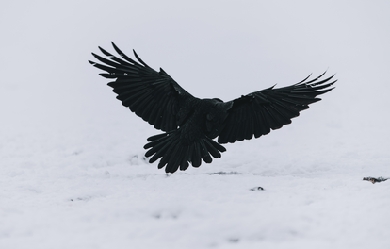
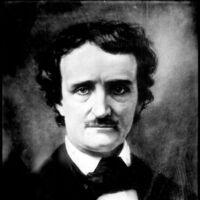
Edgar Allan Poe (born Edgar Poe, January 19, 1809 – October 7, 1849) was an American author, poet, editor and literary critic, considered part of the American Romantic Movement. Best known for his tales of mystery and the macabre, Poe was one of the earliest American practitioners of the short story and is considered the inventor of the detective fiction genre. He is further credited with contributing to the emerging genre of science fiction. He was the first well-known American writer to try to earn a living through writing alone, resulting in a financially difficult life and career. He was born as Edgar Poe in Boston, Massachusetts; he was orphaned young when his mother died shortly after his father abandoned the family. Poe was taken in by John and Frances Allan, of Richmond, Virginia, but they never formally adopted him. He attended the University of Virginia for one semester but left due to lack of money. After enlisting in the Army and later failing as an officer's cadet at West Point, Poe parted ways with the Allans. His publishing career began humbly, with an anonymous collection of poems, Tamerlane and Other Poems (1827), credited only to “a Bostonian”.
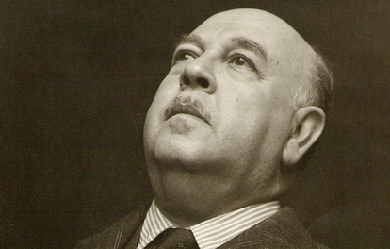
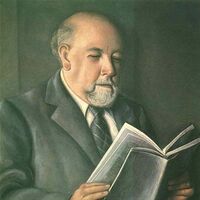
Alfonso Reyes Ochoa (Monterrey, 17 de mayo de 1889 - México, D.F., 27 de diciembre de 1959) fue un poeta, ensayista, narrador, diplomático y pensador mexicano. Se le conoce también como «el regiomontano universal». Fue el noveno de los doce hijos del general Bernardo Reyes y de doña Aurelia Ochoa. Su padre ocupó importantes cargos durante los gobiernos de Porfirio Díaz (fue gobernador del estado de Nuevo León y Secretario de Guerra y Marina). Alfonso Reyes es un escritor clásico, formalista, comedido, su prosa nos hace pensar en el modelo apolíneo de Nietzsche. Sus temas y preocupaciones fueron siempre los grandes temas de la cultura clásica griega. Fue considerado por Borges “el mejor prosista del idioma español del siglo XX”.
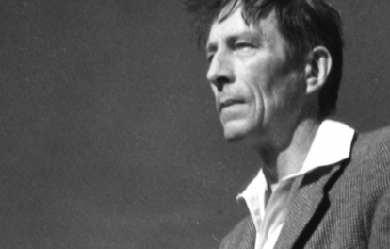
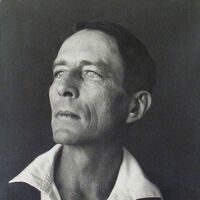
John Robinson Jeffers (January 10, 1887 – January 20, 1962) was an American poet, known for his work about the central California coast. Much of Jeffers' poetry was written in narrative and epic form, but he is also known for his shorter verse and is considered an icon of the environmental movement. Influential and highly regarded in some circles, despite or because of his philosophy of "inhumanism," Jeffers believed that transcending conflict required human concerns to be de-emphasized in favor of the boundless whole. This led him to oppose U.S. participation in World War II, a stand that was controversial at the time. Jeffers was born in Allegheny, Pennsylvania (now part of Pittsburgh), the son of a Presbyterian minister and biblical scholar, Reverend Dr. William Hamilton Jeffers, and Annie Robinson Tuttle. His brother was Hamilton Jeffers, who became a well-known astronomer, working at Lick Observatory. His family was supportive of his interest in poetry. He traveled through Europe during his youth and attended school in Switzerland. He was a child prodigy, interested in classics and Greek and Latin language and literature. At sixteen he entered Occidental College. At school, he was an avid outdoorsman, and active in the school's literary societies. After he graduated from Occidental, Jeffers went to the University of Southern California to study at first literature, and then medicine. He met Una Call Kuster in 1906; she was three years older than he was, a graduate student, and the wife of a Los Angeles attorney. In 1910 he enrolled as a forestry student at the University of Washington in Seattle, a course of study that he abandoned after less than one year, at which time he returned to Los Angeles. Sometime before this, he and Una had begun an affair that became a scandal, reaching the front page of the Los Angeles Times in 1912. After Una spent some time in Europe to quiet things down, the two were married in 1913, and moved to Carmel, California, where Jeffers constructed Tor House and Hawk Tower. The couple had a daughter who died a day after birth in 1914, and then twin sons (Donnan and Garth) in 1916. Una died of cancer in 1950. Jeffers died in 1962; an obituary can be found in the New York Times, January 22, 1962. Poetic career In the 1920s and 1930s, at the height of his popularity, Jeffers was famous for being a tough outdoorsman, living in relative solitude and writing of the difficulty and beauty of the wild. He spent most of his life in Carmel, California, in a granite house that he had built himself called "Tor House and Hawk Tower". Tor is a term for a craggy outcrop or lookout. Before Jeffers and Una purchased the land where Tor House would be built, they rented two cottages in Carmel, and enjoyed many afternoon walks and picnics at the "tors" near the site that would become Tor House. To build the first part of Tor House, a small, two story cottage, Jeffers hired a local builder, Michael Murphy. He worked with Murphy, and in this short, informal apprenticeship, he learned the art of stonemasonry. He continued adding on to Tor House throughout his life, writing in the mornings and working on the house in the afternoon. Many of his poems reflect the influence of stone and building on his life. He later built a large four-story stone tower on the site called Hawk Tower. While he had not visited Ireland at this point in his life, it is possible that Hawk Tower is based on Francis Joseph Bigger's 'Castle Séan' at Ardglass, County Down, which had also in turn influenced Yeats' poets tower, Thoor Ballylee. Construction on Tor House continued into the late 1950s and early 1960s, and was completed by his eldest son. The completed residence was used as a family home until his descendants decided to turn it over to the Tor House Foundation, formed by Ansel Adams, for historic preservation. The romantic Gothic tower was named after a hawk that appeared while Jeffers was working on the structure, and which disappeared the day it was completed. The tower was a gift for his wife Una, who had a fascination for Irish literature and stone towers. In Una's special room on the second floor were kept many of her favorite items, photographs of Jeffers taken by the artist Weston, plants and dried flowers from Shelley's grave, and a rosewood melodeon which she loved to play. The tower also included a secret interior staircase – a source of great fun for his young sons. During this time, Jeffers published volumes of long narrative blank verse that shook up the national literary scene. These poems, including Tamar and Roan Stallion, introduced Jeffers as a master of the epic form, reminiscent of ancient Greek poets. These poems were full of controversial subject matter such as incest, murder and parricide. Jeffers' short verse includes "Hurt Hawks," "The Purse-Seine" and "Shine, Perishing Republic." His intense relationship with the physical world is described in often brutal and apocalyptic verse, and demonstrates a preference for the natural world over what he sees as the negative influence of civilization. Jeffers did not accept the idea that meter is a fundamental part of poetry, and, like Marianne Moore, claimed his verse was not composed in meter, but "rolling stresses." He believed meter was imposed on poetry by man and not a fundamental part of its nature. nitially, Tamar and Other Poems received no acclaim, but when East Coast reviewers discovered the work and began to compare Jeffers to Greek tragedians, Boni & Liveright reissued an expanded edition as Roan Stallion, Tamar and Other Poems (1925). In these works, Jeffers began to articulate themes that contributed to what he later identified as Inhumanism. Mankind was too self-centered, he complained, and too indifferent to the "astonishing beauty of things." Jeffers's longest and most ambitious narrative, The Women at Point Sur (1927), startled many of his readers, heavily loaded as it was with Nietzschean philosophy. The balance of the 1920s and the early 1930s were especially productive for Jeffers, and his reputation was secure. In 1934, he made the acquaintance of the philosopher J Krishnamurti and was struck by the force of Krishnamurti's person. He wrote a poem entitled "Credo" which many feel refers to Krishnamurti. In Cawdor and Other Poems (1928), Dear Judas and Other Poems (1929), Descent to the Dead, Poems Written in Ireland and Great Britain (1931), Thurso's Landing (1932), and Give Your Heart to the Hawks (1933), Jeffers continued to explore the questions of how human beings could find their proper relationship (free of human egocentrism) with the divinity of the beauty of things. These poems, set in the Big Sur region (except Dear Judas and Descent to the Dead), enabled Jeffers to pursue his belief that the natural splendor of the area demanded tragedy: the greater the beauty, the greater the demand. As Euripides had, Jeffers began to focus more on his own characters' psychologies and on social realities than on the mythic. The human dilemmas of Phaedra, Hippolytus, and Medea fascinated him. Many books followed Jeffers' initial success with the epic form, including an adaptation of Euripides' Medea, which became a hit Broadway play starring Dame Judith Anderson. D. H. Lawrence, Edgar Lee Masters, Benjamin De Casseres, and George Sterling were close friends of Jeffers, Sterling having the longest and most intimate relationship with him. While living in Carmel, Jeffers became the focal point for a small but devoted group of admirers. At the peak of his fame, he was one of the few poets to be featured on the cover of Time Magazine. He was also asked to read at the Library of Congress, and was posthumously put on a U.S. postage stamp. Part of the decline of Jeffers' popularity was due to his staunch opposition to the United States' entering World War II. In fact, his book The Double Axe and Other Poems (1948), a volume of poems that was largely critical of U.S. policy, came with an extremely unconventional note from Random House that the views expressed by Jeffers were not those of the publishing company. Soon after, his work was received negatively by several influential literary critics. Several particularly scathing pieces were penned by Yvor Winters, as well as by Kenneth Rexroth, who had been very positive in his earlier commentary on Jeffers' work. Jeffers would publish poetry intermittently during the 1950s but his poetry never again attained the same degree of popularity that it had in the 1920s and the 1930s. Inhumanism Jeffers coined the word inhumanism, the belief that mankind is too self-centered and too indifferent to the "astonishing beauty of things." In the famous poem "Carmel Point," Jeffers called on humans to "uncenter" themselves. In "The Double Axe," Jeffers explicitly described inhumanism as "a shifting of emphasis and significance from man to notman; the rejection of human solipsism and recognition of the trans-human magnificence. ... This manner of thought and feeling is neither misanthropic nor pessimist. ... It offers a reasonable detachment as rule of conduct, instead of love, hate and envy ... it provides magnificence for the religious instinct, and satisfies our need to admire greatness and rejoice in beauty." In The Loyalties of Robinson Jeffers,the first in-depth study of Jeffers not written by one of his circle, poet and critic J. Radcliffe Squires addresses the question of a reconciliation of the beauty of the world and potential beauty in mankind: “Jeffers has asked us to look squarely at the universe. He has told us that materialism has its message, its relevance, and its solace. These are different from the message, relevance, and solace of humanism. Humanism teaches us best why we suffer, but materialism teaches us how to suffer.” Influence His poems have been translated into many languages and published all over the world. Outside of the United States he is most popular in Japan and the Czech Republic. William Everson, Edward Abbey, Gary Snyder, and Mark Jarman are just a few recent authors who have been influenced by Jeffers. Charles Bukowski remarked that Jeffers was his favorite poet. Polish poet Czesław Miłosz also took an interest in Jeffers' poetry and worked as a translator for several volumes of his poems. Jeffers also exchanged some letters with his Czech translator and popularizer, the poet Kamil Bednář. Writer Paul Mooney (1904–1939), son of American Indian authority James Mooney (1861–1921) and collaborator of travel writer Richard Halliburton (1900–1939), "was known always to carry with him (a volume of Jeffers) as a chewer might carry a pouch of tobacco ... and, like Jeffers," writes Gerry Max in Horizon Chasers, "worshipped nature ... (taking) refuge (from the encroachments of civilization) in a sort of chthonian mysticism rife with Greek dramatic elements ..." Jeffers was an inspiration and friend to western U.S. photographers of the early twentieth century, including Ansel Adams, Edward Weston, and Morley Baer. In fact, the elegant book of Baer's photographs juxtaposed with Jeffers' poetry, combines the creative talents of those two residents of the Big Sur coast. Although Jeffers has largely been marginalized in the mainstream academic community over the last thirty years, several important contemporary literary critics, including Albert Gelpi of Stanford University, and poet, critic and NEA chairman Dana Gioia, have consistently cited Jeffers as a formidable presence in modern literature. His poem "The Beaks of Eagles" was made into a song by The Beach Boys on their album Holland (1973). Two lines from Jeffers' poem "We Are Those People" are quoted toward the end of the 2008 film Visioneers. Several lines from Jeffers' poem "Wise Men in Their Bad Hours" ("Death's a fierce meadowlark: but to die having made / Something more equal to the centuries / Than muscle and bone, is mostly to shed weakness.") appear in Christopher McCandless' diary. Robinson Jeffers is mentioned in the 2004 film I Heart Huckabees by the character Albert Markovski played by Jason Schwartzman, when defending Jeffers as a nature writer against another character's claim that environmentalism is socialism. Markovski says, "Henry David Thoreau, Robinson Jeffers, the National Geographic Society...all socialists?" Further reading and research The largest collections of Jeffers' manuscripts and materials are in the Harry Ransom Humanities Research Center at the University of Texas at Austin and in the libraries at Occidental College, the University of California, and Yale University. A collection of his letters has been published as The Selected Letters of Robinson Jeffers, 1887–1962 (1968). Other books of criticism and poetry by Jeffers are: Poetry, Gongorism and a Thousand Years (1949), Themes in My Poems (1956), Robinson Jeffers: Selected Poems (1965), The Alpine Christ and Other Poems (1974), What Odd Expedients" and Other Poems (1981), and Rock and Hawk: A Selection of Shorter Poems by Robinson Jeffers (1987). Stanford University Press recently released a five-volume collection of the complete works of Robinson Jeffers. In an article titled, "A Black Sheep Joins the Fold", written upon the release of the collection in 2001, Stanford Magazine commented that it was remarkable that, due to a number of circumstances, "there was never an authoritative, scholarly edition of California’s premier bard" until the complete works published by Stanford. Biographical studies include George Sterling, Robinson Jeffers: The Man and the Artist (1926); Louis Adamic, Robinson Jeffers (1929); Melba Bennett, Robinson Jeffers and the Sea (1936) and The Stone Mason of Tor House (1966); Radcliffe Squires, The Loyalties of Robinson Jeffers (1956); Edith Greenan, Of Una Jeffers (1939); Mabel Dodge Luhan, Una and Robin (1976; written in 1933); Ward Ritchie, Jeffers: Some Recollections of Robinson Jeffers (1977); and James Karman, Robinson Jeffers: Poet of California (1987). Books about Jeffers's career include L. C. Powell, Robinson Jeffers: The Man and His Work (1940; repr. 1973); William Everson, Robinson Jeffers: Fragments of an Older Fury (1968); Arthur B. Coffin, Robinson Jeffers: Poet of Inhumanism (1971); Bill Hotchkiss, Jeffers: The Sivaistic Vision (1975); James Karman, ed., Critical Essays on Robinson Jeffers (1990); Alex Vardamis The Critical Reputation of Robinson Jeffers (1972); and Robert Zaller, ed., Centennial Essays for Robinson Jeffers (1991). The Robinson Jeffers Newsletter, ed. Robert Brophy, is a valuable scholarly resource. In a rare recording, Jeffers can be heard reading his "The Day Is A Poem" (September 19, 1939) on Poetry Speaks – Hear Great Poets Read Their Work from Tennyson to Plath, Narrated by Charles Osgood (Sourcebooks, Inc., c2001), Disc 1, #41; including text, with Robert Hass on Robinson Jeffers, pp. 88–95. Jeffers was also on the cover of Time – The Weekly Magazine, April 4, 1932 (pictured on p. 90. Poetry Speaks). Jeffers Studies, a journal of research on the poetry of Robinson Jeffers and related topics, is published semi-annually by the Robinson Jeffers Association. Bibliography * Flagons and Apples. Los Angeles: Grafton, 1912. * Californians. New York: Macmillan, 1916. * Tamar and Other Poems. New York: Peter G. Boyle, 1924. * Roan Stallion, Tamar, and Other Poems. New York: Boni and Liveright, 1925. * The Women at Point Sur. New York: Liveright, 1927. * Cawdor and Other Poems. New York: Liveright, 1928. * Dear Judas and Other Poems. New York: Liveright, 1929. * Thurso's Landing and Other Poems. New York: Liveright, 1932. * Give Your Heart to the Hawks and other Poems. New York: Random House, 1933. * Solstice and Other Poems. New York: Random House, 1935. * Such Counsels You Gave To Me and Other Poems. New York: Random House, 1937. * The Selected Poetry of Robinson Jeffers. New York: Random House, 1938. * Be Angry at the Sun. New York: Random House, 1941. * Medea. New York: Random House, 1946. * The Double Axe and Other Poems. New York: Random House, 1948. * Hungerfield and Other Poems. New York: Random House, 1954. * The Beginning and the End and Other Poems. New York: Random House, 1963. * Robinson Jeffers: Selected Poems. New York: Vintage, 1965. * Stones of the Sur. Stanford: Stanford University Press, 2001. References Wikipedia—https://en.wikipedia.org/wiki/Robinson_Jeffers
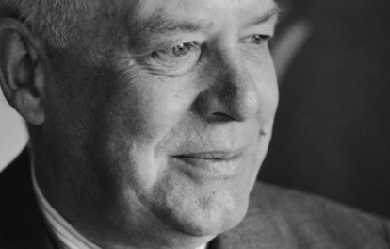
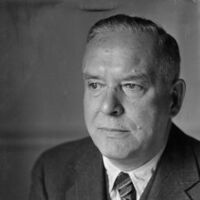
Wallace Stevens was born in Reading, Pennsylvania, on October 2, 1879. He attended Harvard University as an undergraduate from 1897 to 1900. He planned to travel to Paris as a writer, but after a working briefly as a reporter for the New York Herald Times, he decided to study law. He graduated with a degree from New York Law School in 1903 and was admitted to the U.S. Bar in 1904. He practised law in New York City until 1916. Though he had serious determination to become a successful lawyer, Stevens had several friends among the New York writers and painters in Greenwich Village, including the poets William Carlos Williams, Marianne Moore, and E. E. Cummings. In 1914, under the pseudonym "Peter Parasol," he sent a group of poems under the title "Phases" to Harriet Monroe for a war poem competition for Poetry magazine. Stevens did not win the prize, but was published by Monroe in November of that year. Stevens moved to Connecticut in 1916, having found employment at the Hartford Accident and Indemnity Co., of which he became vice president in 1934. He had began to establish an identity for himself outside the world of law and business, however, and his first book of poems, Harmonium, published in 1923, exhibited the influence of both the English Romantics and the French symbolists, an inclination to aesthetic philosophy, and a wholly original style and sensibility: exotic, whimsical, infused with the light and color of an Impressionist painting. For the next several years, Stevens focused on his business life. He began to publish new poems in 1930, however, and in the following year, Knopf published an second edition of Harmonium, which included fourteen new poems and left out three of the decidedly weaker ones. More than any other modern poet, Stevens was concerned with the transformative power of the imagination. Composing poems on his way to and from the office and in the evenings, Stevens continued to spend his days behind a desk at the office, and led a quiet, uneventful life. Though now considered one of the major American poets of the century, he did not receive widespread recognition until the publication of his Collected Poems, just a year before his death. His major works include Ideas of Order (1935), The Man With the Blue Guitar (1937), Notes Towards a Supreme Fiction (1942), and a collection of essays on poetry, The Necessary Angel (1951). Stevens died in Hartford in 1955. Poetry Harmonium (1923) Ideas of Order (1935) Owl's Clover (1936) The Man With the Blue Guitar (1937) Notes Towards a Supreme Fiction (1942) Parts of a World (1942) Esthétique du Mal (1945) Three Academic Pieces (1947) Transport to Summer (1947) Primitive Like an Orb (1948) Auroras of Autumn (1950) Collected Poems (1954) Opus Posthumous (1957) The Palm at the End of the Mind (1967) Prose The Necessary Angel (1951) Plays Three Travellers Watch the Sunrise (1916) Carlos Among the Candles (1917) References Poets.org — http://www.poets.org/poet.php/prmPID/124
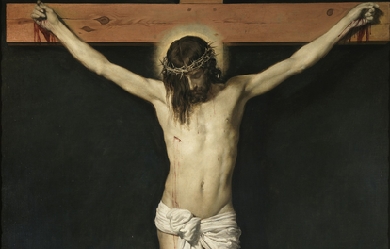
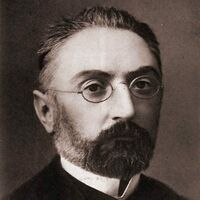
Miguel de Unamuno y Jugo (Bilbao, 29 de septiembre de 1864-Salamanca, 31 de diciembre de 1936) fue un escritor y filósofo español perteneciente a la generación del 98. En su obra cultivó gran variedad de géneros literarios como novela, ensayo, teatro y poesía. Rector de la Universidad de Salamanca a lo largo de tres periodos, también fue diputado de las Cortes constituyentes de la Segunda República, de la que se fue distanciando hasta el punto de secundar la sublevación militar que dio inicio a la guerra civil, si bien terminó retractándose de dicho apoyo.

